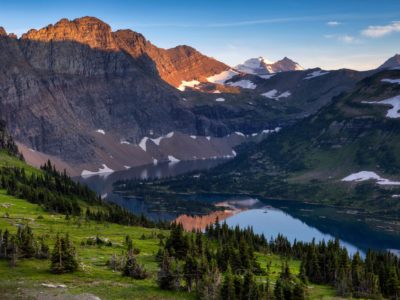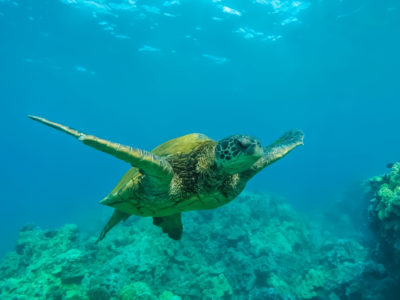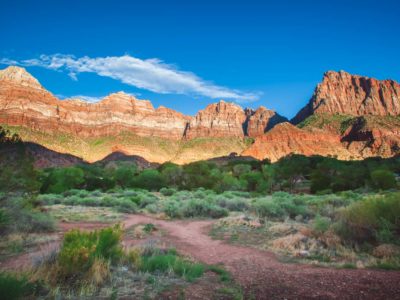Planning to visit Death Valley? Get ready! Death Valley is the largest US national park outside of Alaska. It is the hottest and driest place in North America, and Badwater Basin is the lowest spot on the continent. Whew, Death Valley National Park has a lot going on, but that’s not all! Located in both California and Nevada, Death Valley National Park was established in 1994 after holding the title of Death Valley National Monument for five decades. And in 2013, it was fittingly designated as a Dark Sky Preserve.
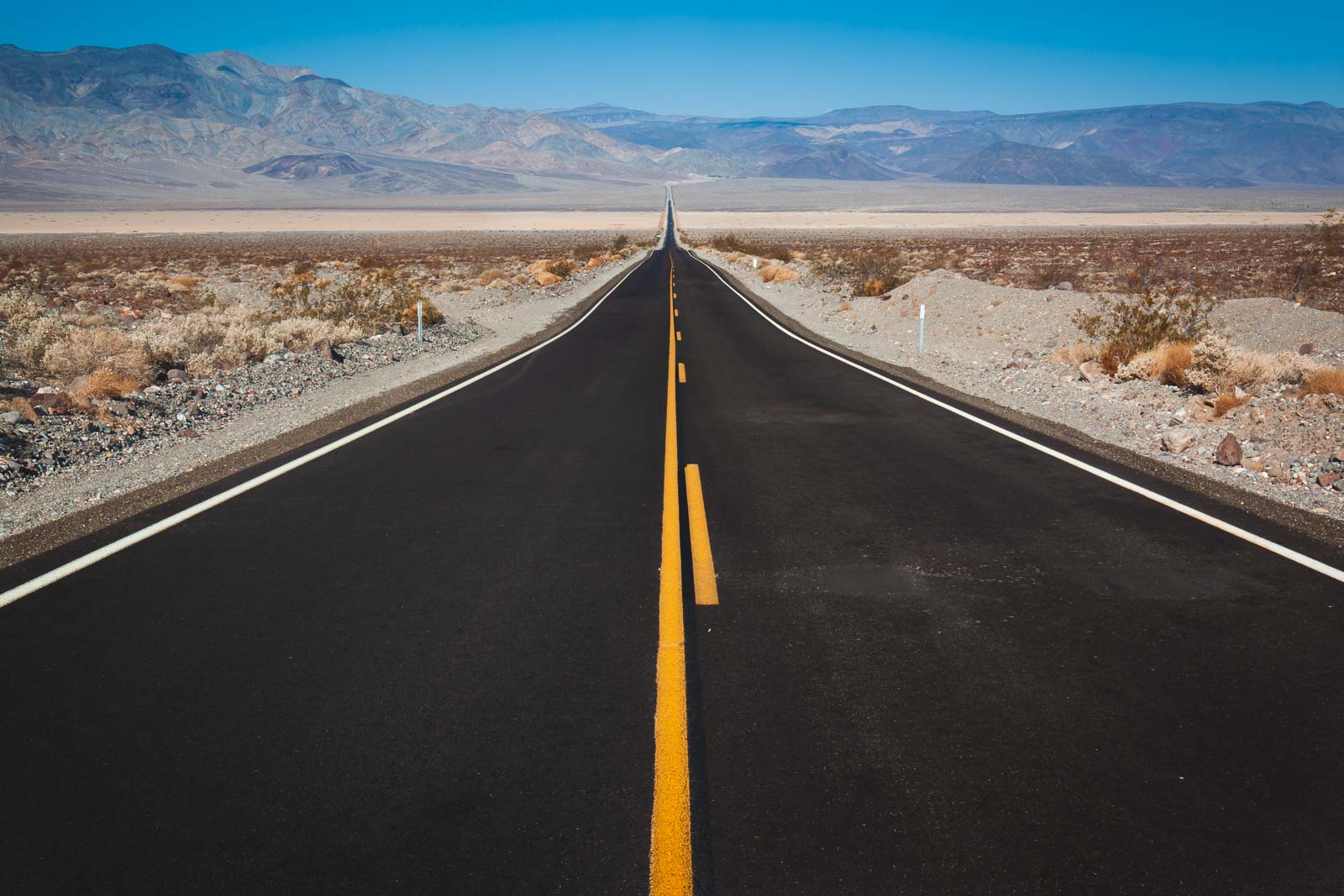
It is easily one of the most memorable places to visit for unique scenery. And as an added bonus, there are many amazing things to do in Death Valley National Park.
Table of Contents
Top things to do in Death Valley National Park
Note: The area has been dealing with extreme weather conditions and some roads are closed in Death Valley due to flood damage. At the time of publishing, many roads are closed including CA 190 west of Stovepipe and Badwater Road and Daylight Pass and Towne Pass are closed. See the National Parks Services Website for up-to-date information.
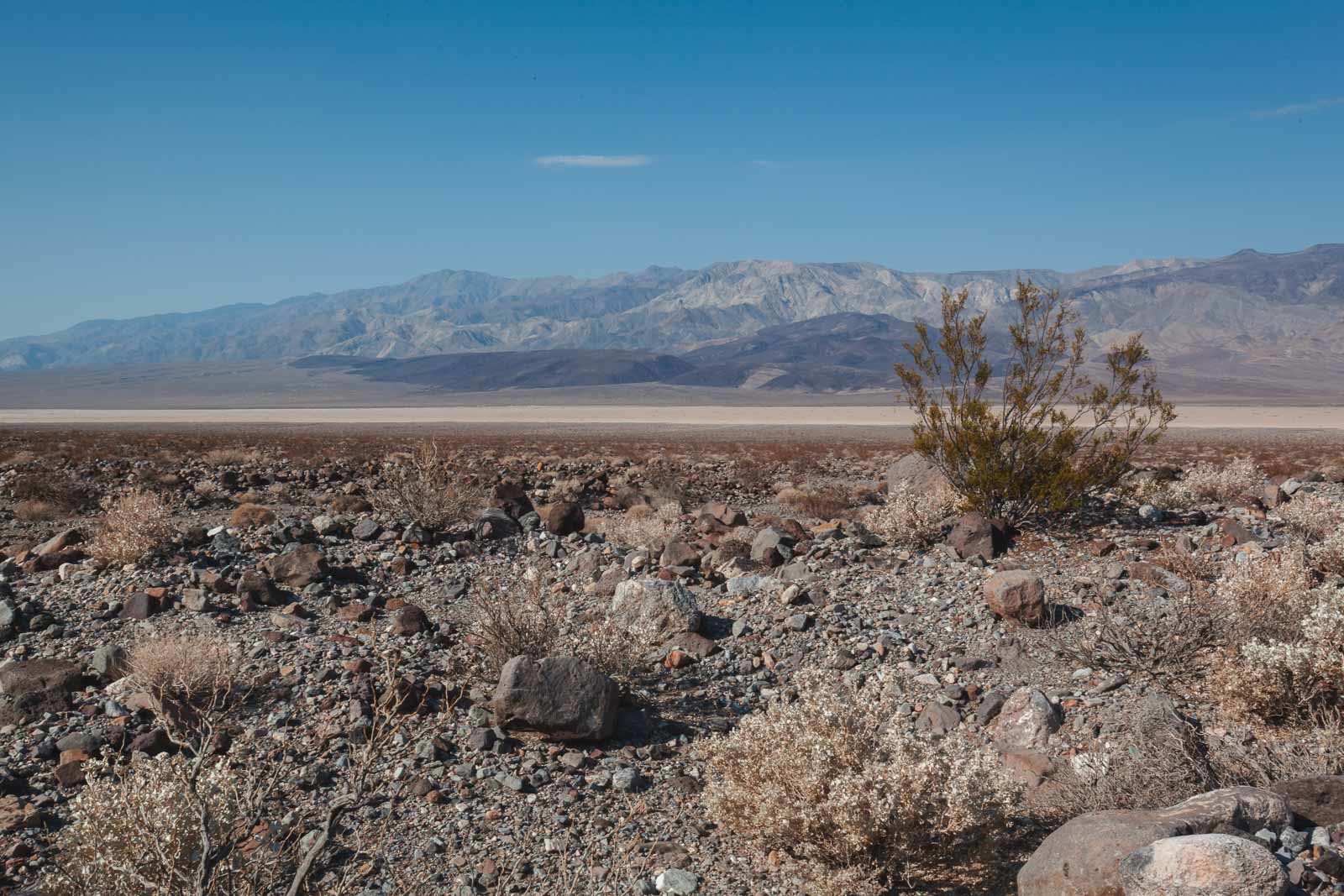
This guide will focus on the best things to do in Death Valley National Park. We’ll cover everything from Natural Bridge to hiking trails along the valley floor. Prepare yourself for some inspiring, exciting things to do in this California national park. If you are doing a self-drive through Death Valley, pick up this GPS driving tour. It highlights many of the top Death Valley attractions.
- Safety Tips for Death Valley National Park: As we mentioned, Death Valley is the hottest and driest place in North America, so:
- make sure to have an ample supply of water before visiting
- stay on paved roads, and let people know where you are going and when you plan to return.
- If you plan on visiting any remote places in Death Valley, consider conveying with two or more vehicles should a breakdown occur.
- Make sure you have a full tank of gas and carry a paper map along with your GPS and cell phone.
1. Mesquite Flat Sand Dunes
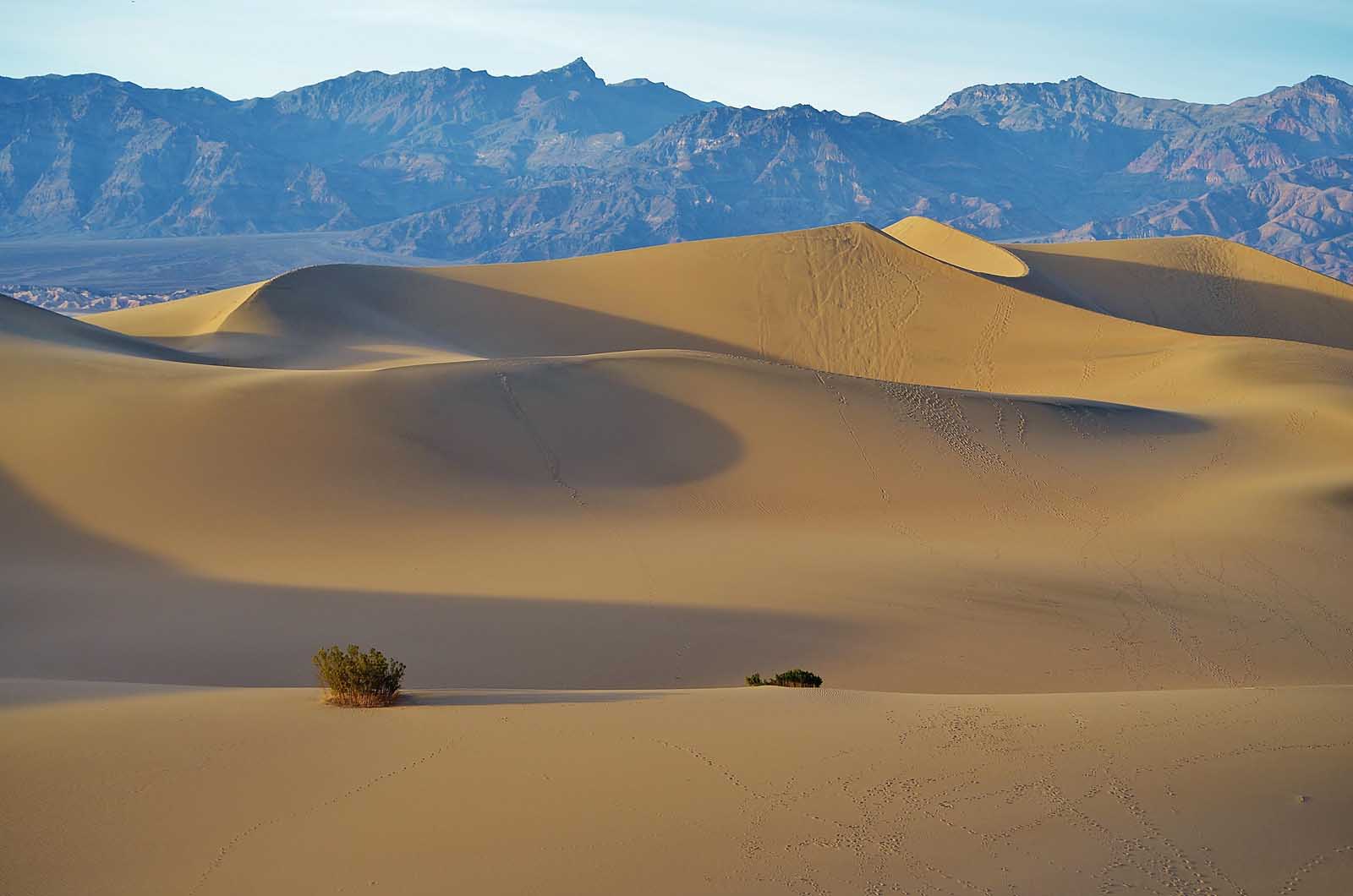
If you are looking for fun things to do in Death Valley National Park, sandboarding at Mesquite Flat Sand Dunes is easily one of the best. Mesquite Flat Sand Dunes are Death Valley’s most popular and easily accessible sand dunes, and some dunes tower as high as 100 feet. Even if you don’t fancy sandboarding, Mesquite Flat Sand Dunes are a great place to release your inner child and attempt to run down the sandy slopes.
Mesquite Sand Dunes are easily reached off the 190, and a reasonably large parking lot is just off the roadside. We suggest getting there early, so the sand dunes are still cool underfoot. There is no sandboarding rentals in the park, so you need to bring your own equipment.
2. Artist’s Palette
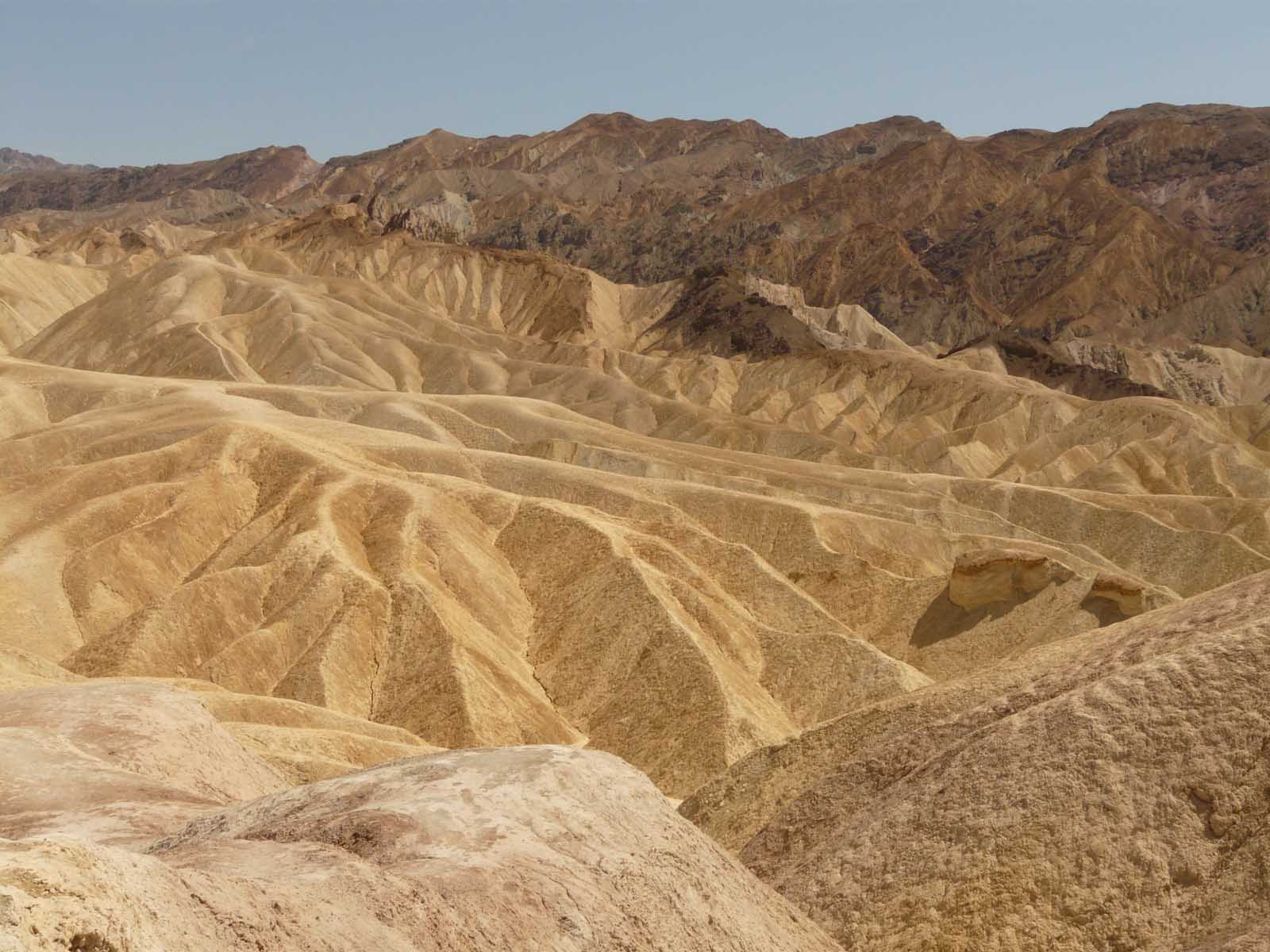
Artist’s Palette is a stunning viewpoint overlooking a collection of pastel-hued hills. The hills turned their unique color after millions of years of oxidation and weathering, and now visitors flock to come to view the phenomenon. The viewpoint gets its name, the ‘Artist’s Palette,’ from the blend of colors.
Artist’s Palette is located on Artist’s Drive loop located, just off Badwater Road. There is a tiny trail from the parking and toilet facilities to the viewpoint itself, and it is very easily reached if you are short on time. The attraction sits along the 9-mile Artist’s Drive loop, which is an attraction in its own right. It is worth allowing extra time to enjoy driving Artist’s Drive at leisure.
Check out this highly rated tour departs from Las Vegas in the early hours of the morning to reach the desert for stargazing and sunrise.
3. Natural Bridge
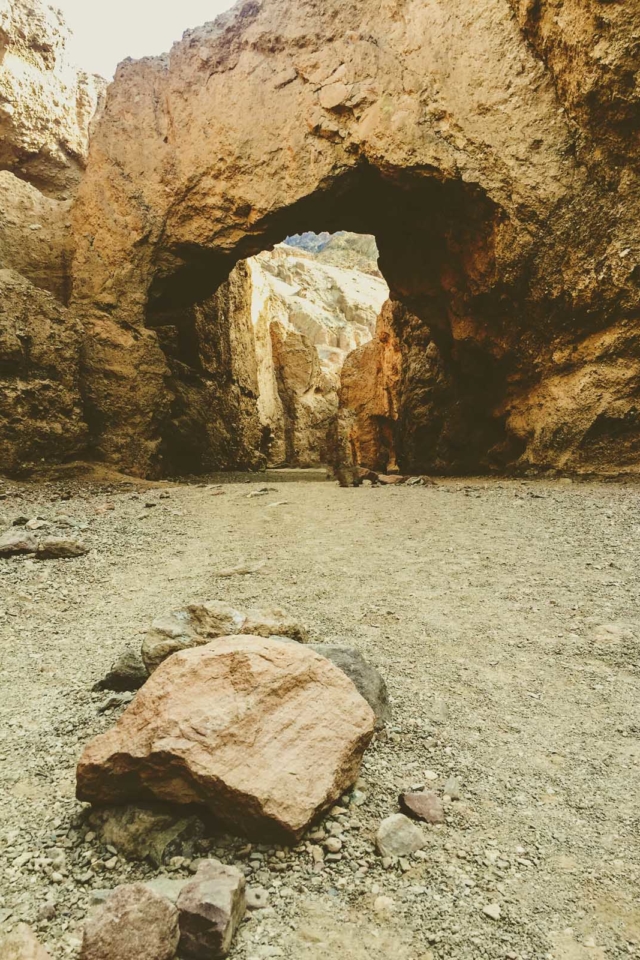
If you can’t make it to the sandstone arches of Arches National Park; Natural Bridge is a vast, jagged arch that towers 35 feet above the canyon floor. Natural Bridge was formed by a rare series of flash floods over thousands of years. Visitors can hike to the bridge to walk underneath and admire the geological formation in all its glory. Visiting Natural Bridge is one of the most impressive things to do in Death Valley.
You have to hike to Natural Bridge, but the route is only a 2-mile round trip. It is the perfect hike if you don’t want to walk long distances in the heat, are in a rush, or traveling as a family. You also get a beautiful view of the salt flats on the return hike, sure to keep your spirits up.
Natural Bridge Trailhead is accessed via a dirt road off Badwater Road. You’ll find plenty of parking at the end but beware that the dirt road conditions can be rough. It is worth checking the road conditions on the National Park Service website before you attempt it. It is best suited to 4WD because of the likelihood of deep potholes.
This photography tour lets you explore Death Valley by day and night. Besides visiting its sand dunes, canyons, and wildlife, you’ll watch the sunset and stay into the starry night to enjoy the dark sky preserve. Details here
4. Devil’s Golf Course
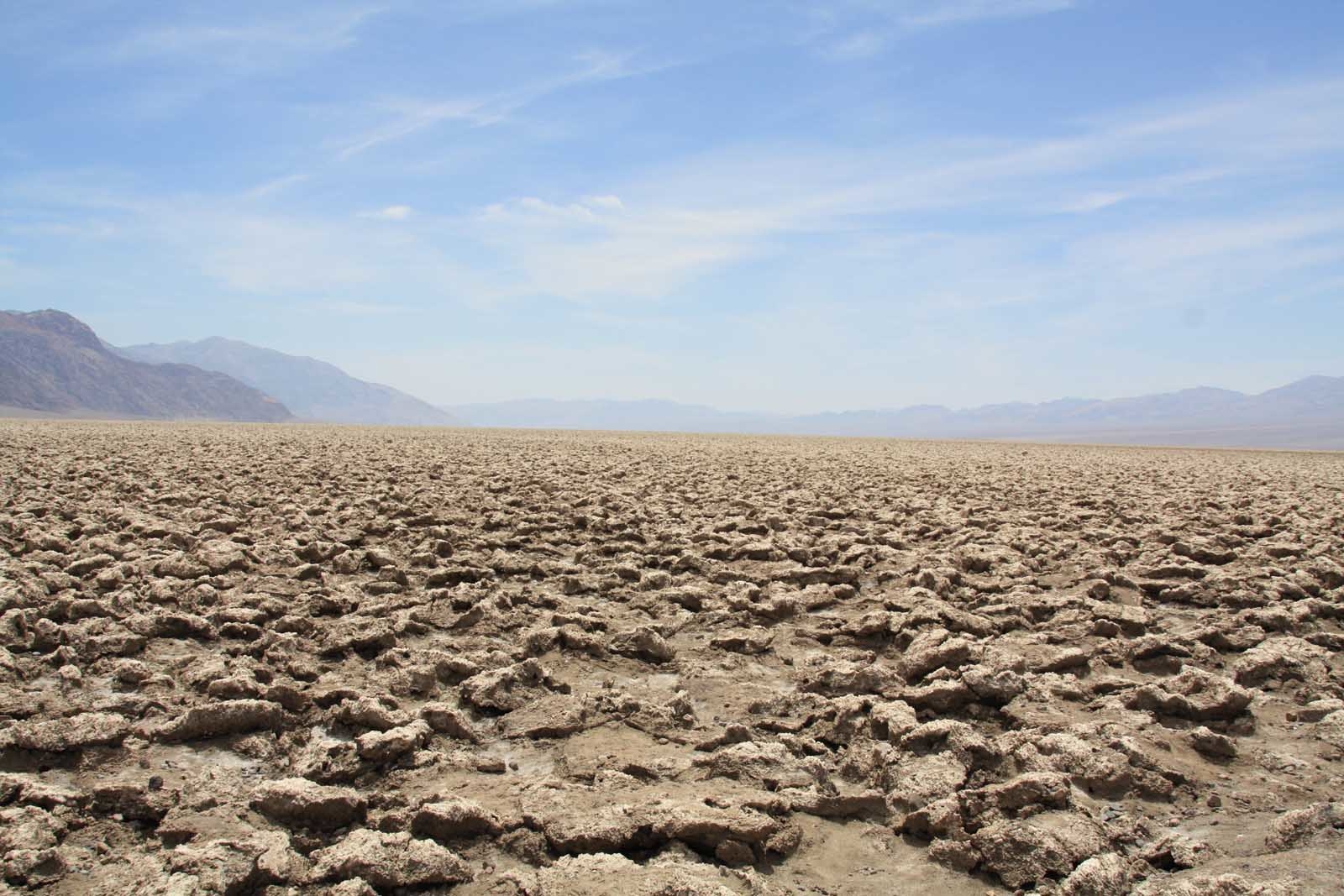
Devil’s Golf Course’s name might have you stumped about what it could be. The attraction is a salt pan, but the floor is so jagged and uneven that an old National Park Service guidebook quipped that ‘only the Devil could play golf there’. The salt pan floor is a far cry from its smooth salt flat neighbor Badwater Basin (which we’ll look at in more detail later), and you’ll find endless stalagmites. Some salt spikes are two feet high, so you’ll be carefully picking your way around a boardwalk rather than walking across the salt pan itself.
The Devil’s Golf Course was once covered by a lake, which evaporated and left behind a thick layer of salt and minerals – creating the natural phenomenon you see today. We highly suggest bringing a camera for this attraction, as it is easily one of the most striking things to do in Death Valley.
This full-day explorer tour by Trekker can be booked from Las Vegas where you hop aboard a custom-built Tour Trekker vehicle with stops including Furnace Creek, Devil’s Golf Course, Badwater, Zabriskie Point, and more
5. Twenty Mule Team Canyon
Twenty Mule Team Canyon is one of the most scenic dirt tracks you’ll see in your life. The short 2.5-mile road takes you through a range of stunning badlands, which are full of pastel colors and uniquely shaped by erosion. The drive may be short, but you’ll want to stop for photographs, so allow at least half an hour to experience it.
Twenty Mule Team Canyon isn’t just famous amongst tourists either. Movie directors have flocked to use the site for major productions, including Return of the Jedi. Star Wars fans should prioritize visiting Twenty Mule Team Canyon when they visit Death Valley.
The scenic drive is easy to reach, and you turn off the 190 onto 20 Mule Team Road before quickly reaching the dirt track turnoff. Twenty Mule Team Canyon is just half an hour’s drive from Furnace Creek Visitor Center. It is well-combined with a visit to nearby Zabriskie Point and Harmony Borax Works.
6. Golden Canyon
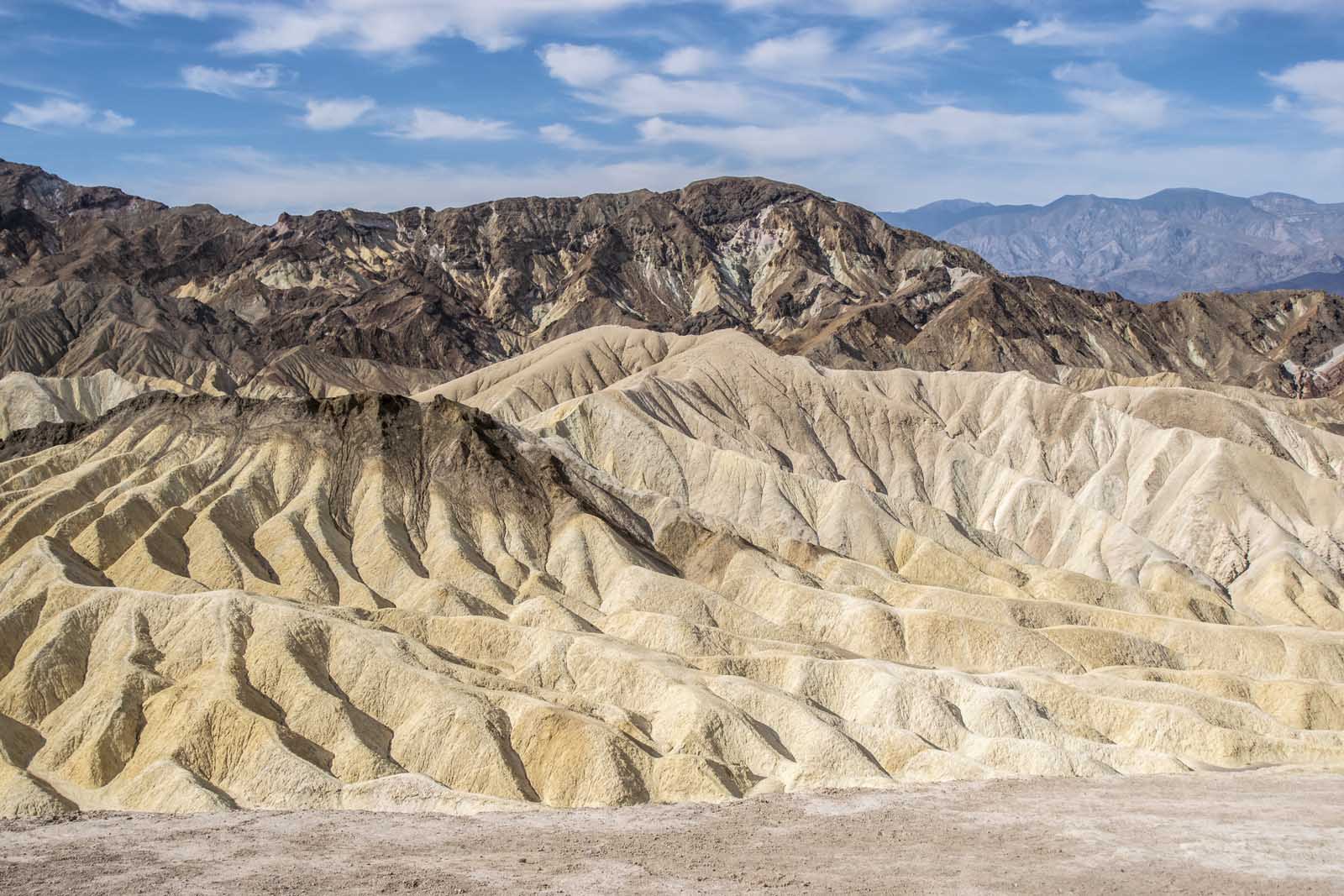
Are you ready for an incredible hike? Golden Canyon Trail is a stunning route through a honey-colored ravine on a clearly marked trail. You’ll want your camera for this one; Golden Canyon’s good looks have attracted the likes of Star Wars movie producers.
The trail is a 2-mile round trip with a short 3-foot rock scramble. The scramble is untechnical and suitable for anybody with good fitness and reliable footwear, so overall, the hike is easy to tackle in Death Valley National Park. Most hikers hike to Red Cathedral as an endpoint, although you can choose to go further if you want an extra challenge.
Golden Canyon is also located just outside of Furnace Creek. The trailhead is just a 7-minute drive from Furnace Creek Visitor Center – making it an easy addition to a busy itinerary. You’ll find a large parking lot and restrooms at the Golden Canyon Trailhead, accessed on a turnoff from Badwater Road.
This highly rated tour offers a full day from Vegas with a private guide and a custom itinerary. And the best part? You’ll have a professional photographer with you taking photos of the entire adventure.
7. Zabriskie Point
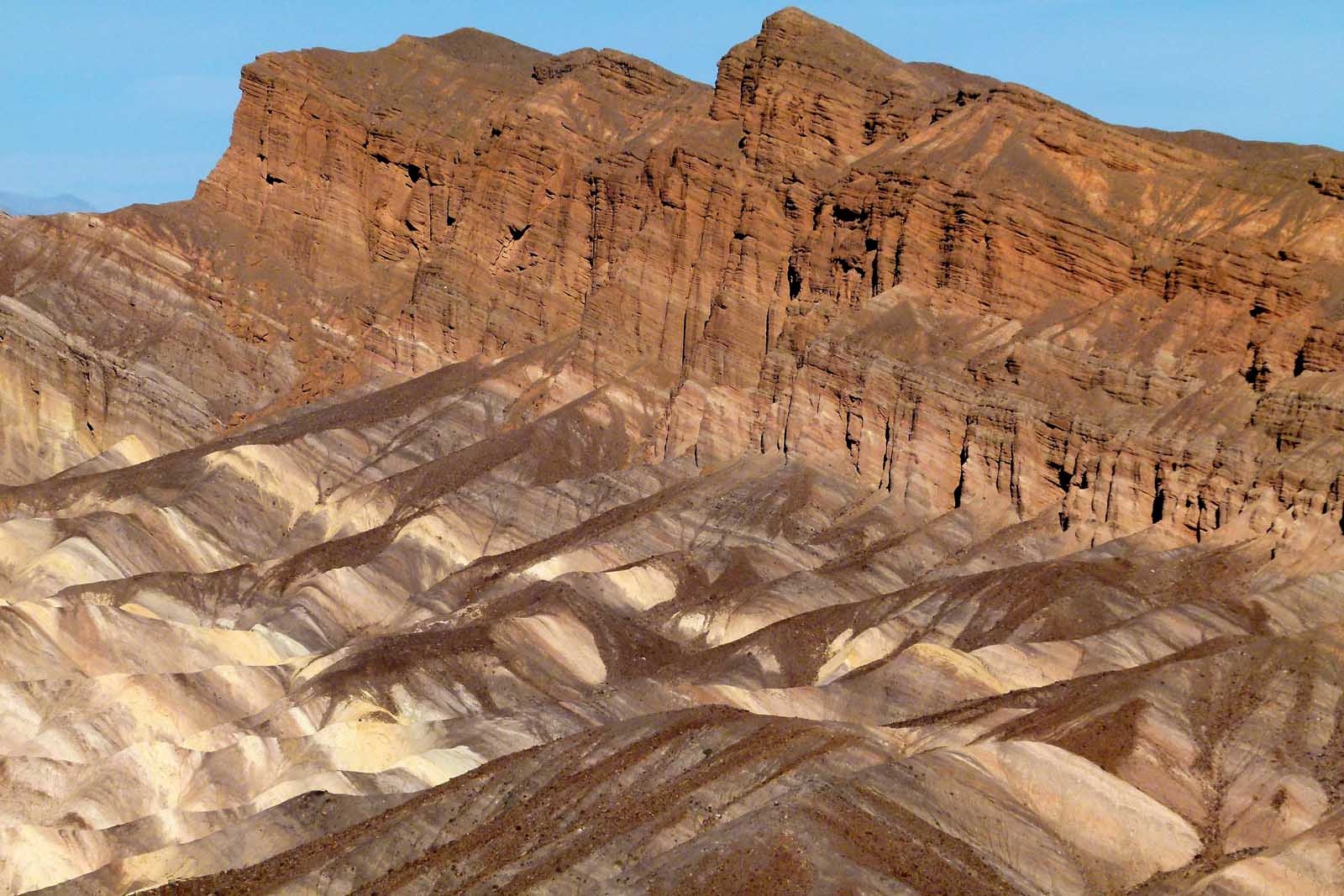
Visiting Zabriskie Point is one of the most beautiful things to do in Death Valley National Park. The viewpoint overlooks hilly, wrinkled badlands tinged in pastel, sandy colors. If you want a sunrise or sunset spot – Zabriskie Point is the one for you.
Zabriskie Point was formed when Furnace Creek Lake dried up around 5 million years ago. The sediments left behind formed the stunning hills, and erosion over the years shaped the landscape into what it is today.
Zabriskie Point is practically on the roadside. You drive on the 190 from Furnace Creek towards Death Valley Junction, turning off into Zabriskie Point Parking Lot to hike the short trail to the viewpoint. It is easy to access and is an excellent place to start your day, conveniently nearby Furnace Creek and the Visitor Center.
8. Badwater Basin
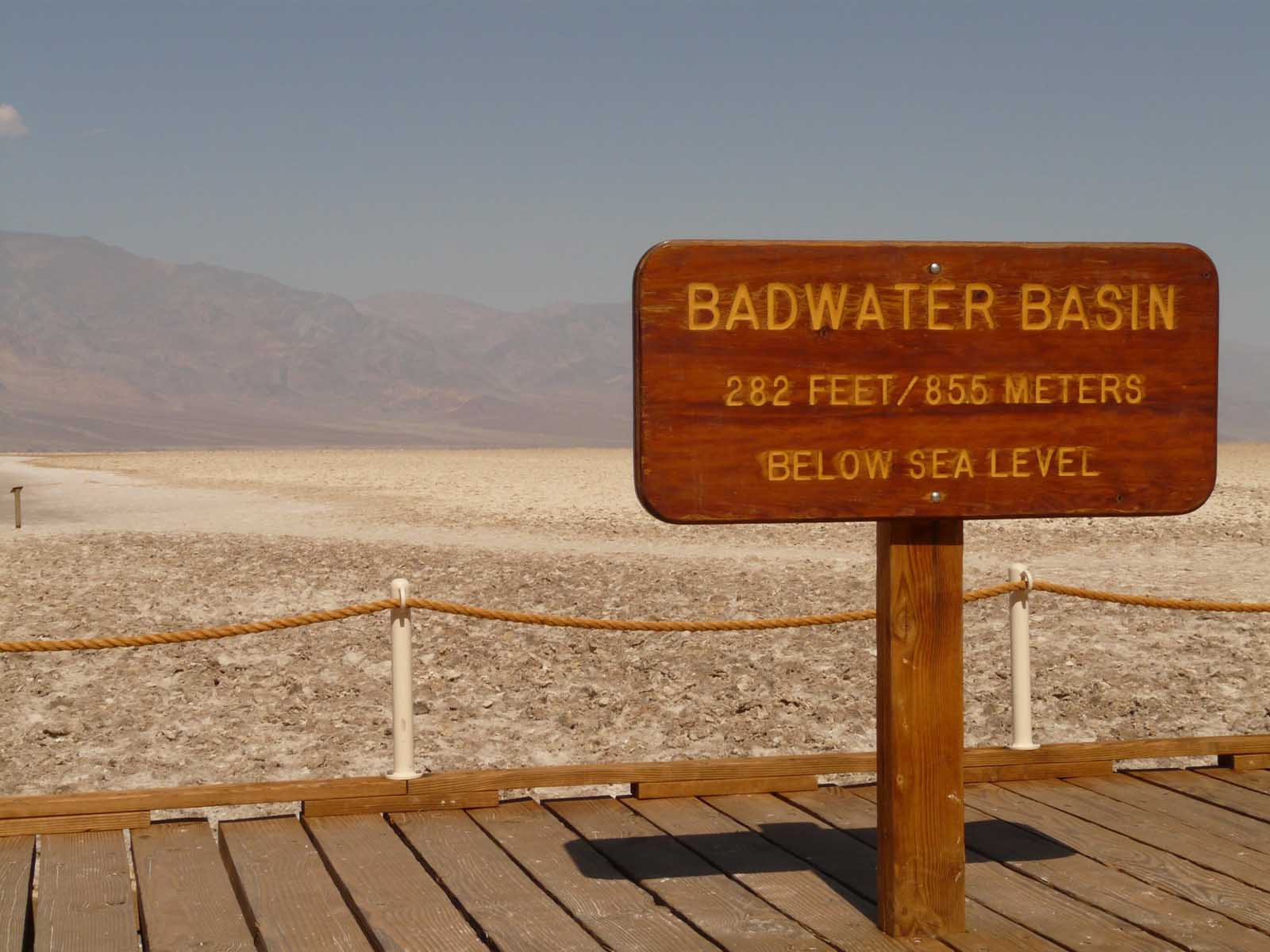
Visiting Badwater Basin is one of the most fascinating things to do in Death Valley. Badwater Basin is the lowest point in North America, at 282 feet below sea level. Badwater Basin has around 200 square miles of salt flats to explore – the largest protected salt flats in the world.
After it rains, Badwater Basin can appear mirror-like as the water reflects off the salt crystals. Badwater Basin looks like snow when it is dry, and the salt flats are arranged in small circular patterns along the valley floor.
Badwater Basin is accessible via a short trail off Badwater Road. You’ll find a toilet block and parking area near its trailhead. Badwater Basin is located extremely close to the Devil’s Golf Course and Dante’s View. Consider combining these three attractions if you drive down Badwater Road to reach Badwater Basin.
9. Scotty’s Castle
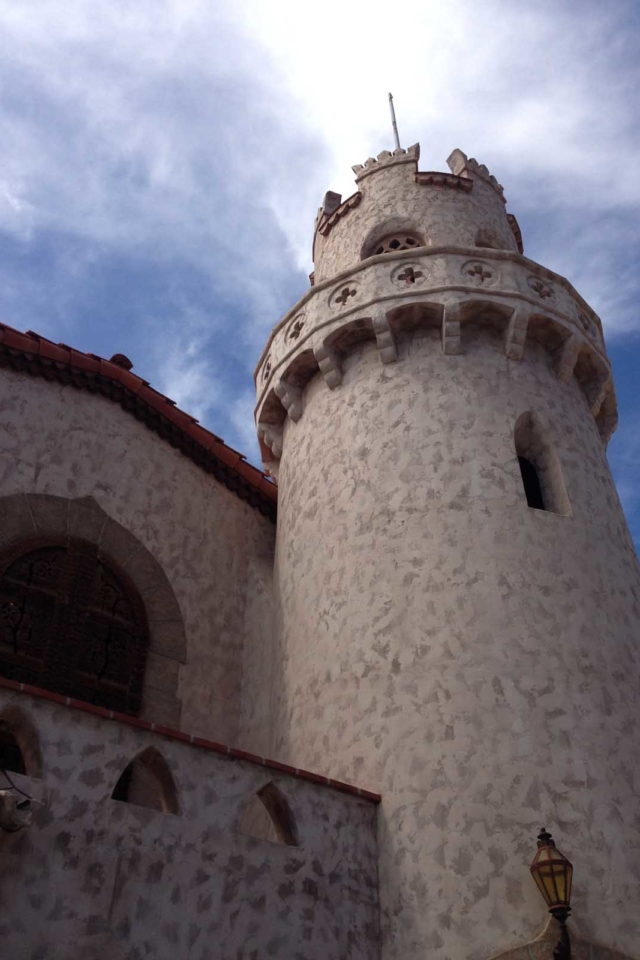
Death Valley isn’t all geology and hiking trails, and Scotty’s Castle is proof of that. The ‘castle’ is not so much a castle but an enormous mansion, and its story is a blend of history and local culture. Visitors can book guided tours of the building today and discover the story in person, but we’ll give you a quick rundown here.
The mansion was built by Albert Mussey Johnson for himself and his wife to use as a luxurious vacation home. However, Walter Scott brazenly convinced the community that he had built it by making money through secret mines in Death Valley. The mansion coined the name Scotty’s Castle, and a cloud of mystery about the mansion’s ‘real story’ is kept alive by local legends.
Either way, the mansion is incredible to tour – whisking visitors back to the roaring 20s and 30s. You can admire extensive woodwork furnishings and details, and sadly also witness the impact of the 2015 floods, which damaged the house extensively in some areas.
10. Darwin Falls
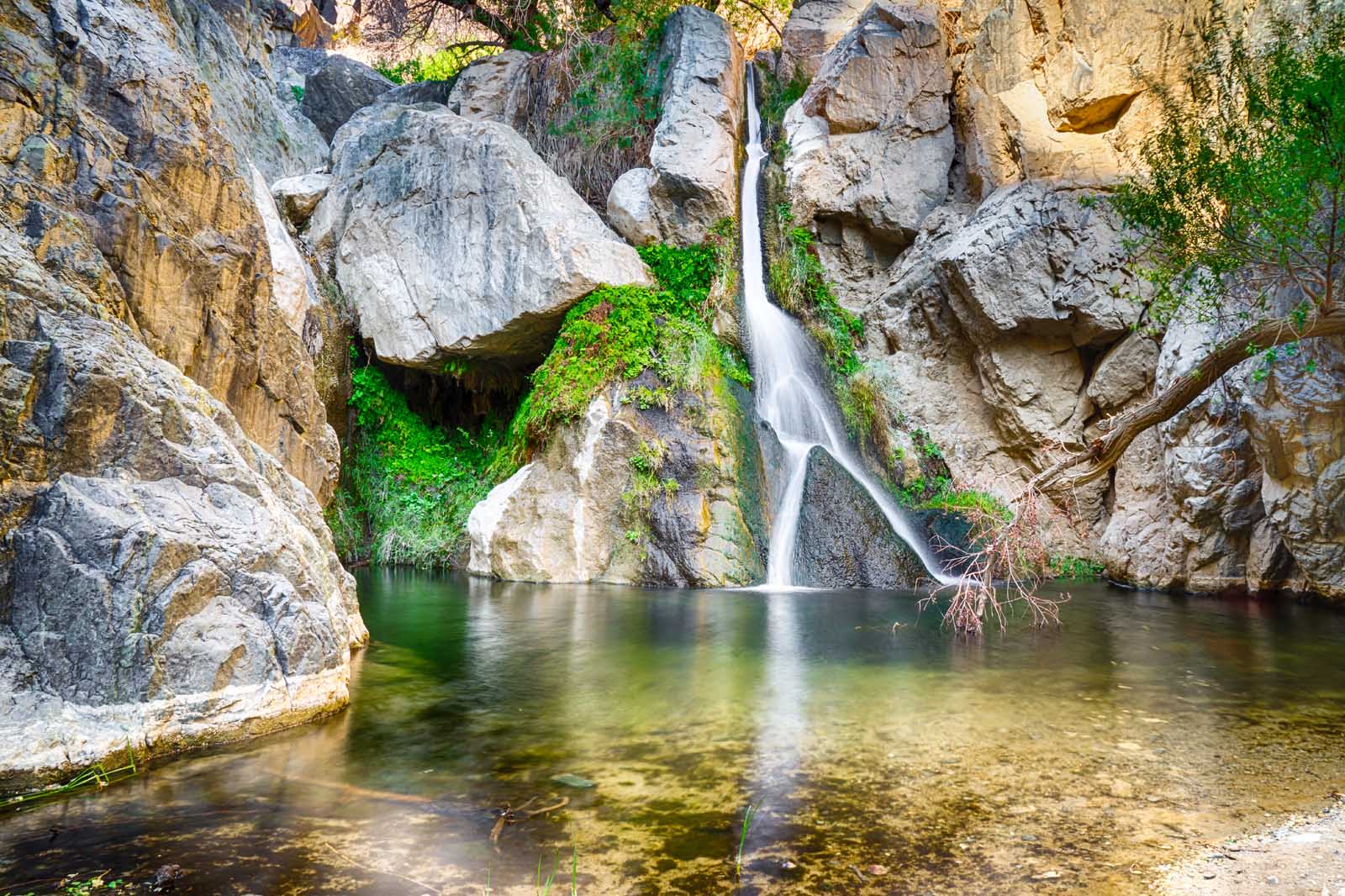
Waterfalls aren’t the most common sight in Death Valley. In fact, Darwin Falls is quite a rare year-round waterfall, as there is only a handful in the national park. The falls are surrounded by life – from flora, including aquatic vegetation, to animals like tree frogs and even bighorn sheep. Darwin Falls is somewhat of a desert oasis, and lifeforms flock to the waters for survival.
Darwin Falls is a stunning sight, and the waterfall drops 18 feet in a pretty cascade. Darwin Falls is accessed by a two-mile round trip hike, which takes around two hours to complete and has an elevation gain of 450 feet. The general advice is to avoid hiking after 10 am in hotter months. You can’t swim to cool off, so aim to hike in the early morning when it is nice and cool.
The trailhead is located off of Old Toll Road on a long dirt track, and there is a large parking lot to use right next to the beginning of the trail. It is worth noting that the track is pretty rough and requires a 4WD vehicle. You may wish to check with a ranger or website for updates on the road conditions.
11. Rhyolite Ghost Town
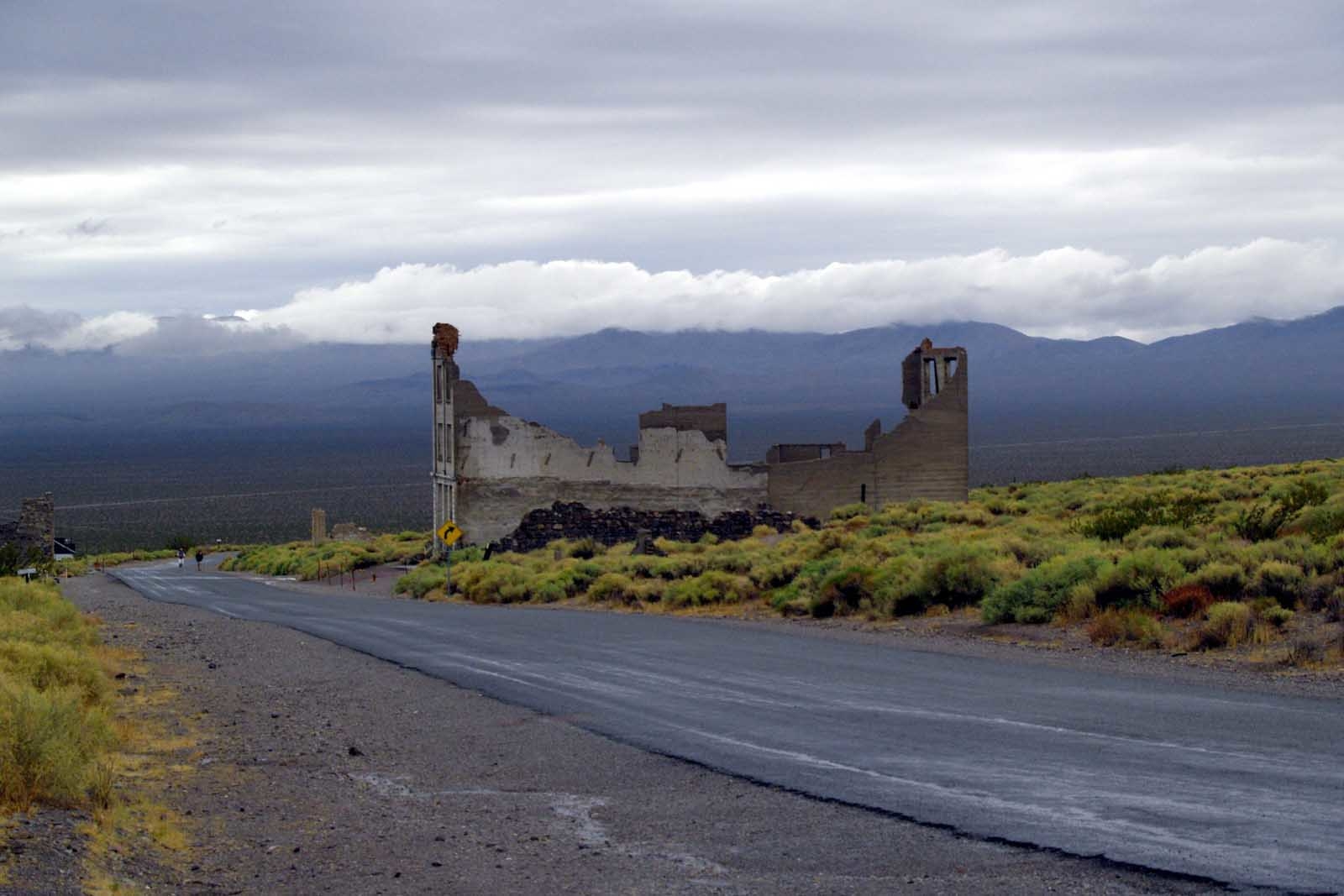
Rhyolite Ghost Town is located just on the outskirts of Death Valley, on the eastern side of the park across the Nevada border. Rhyolite is an old, abandoned mining town, and light and power were turned off for the town in 1916 following the closures of mines and banks. However, nowadays, there is still so much left behind to explore.
The old bank is (just about) still standing, as is the train depot and Tom Kelly’s Bottle House. It is also worth stopping by Goldwell Open Air Museum for an outdoor sculpture garden. Rhyolite is the perfect spot for those interested in history and visiting abandoned sites.
Rhyolite Ghost Town is quite a drive, just over an hour from Furnace Creek. We suggest breaking the drive up by stopping at Hell’s Gate on the way. Hells Gate is a scenic stop to admire Daylight Pass Road’s stunning surroundings and visit the Death Valley National Park Information Area.
12. Eureka Dunes
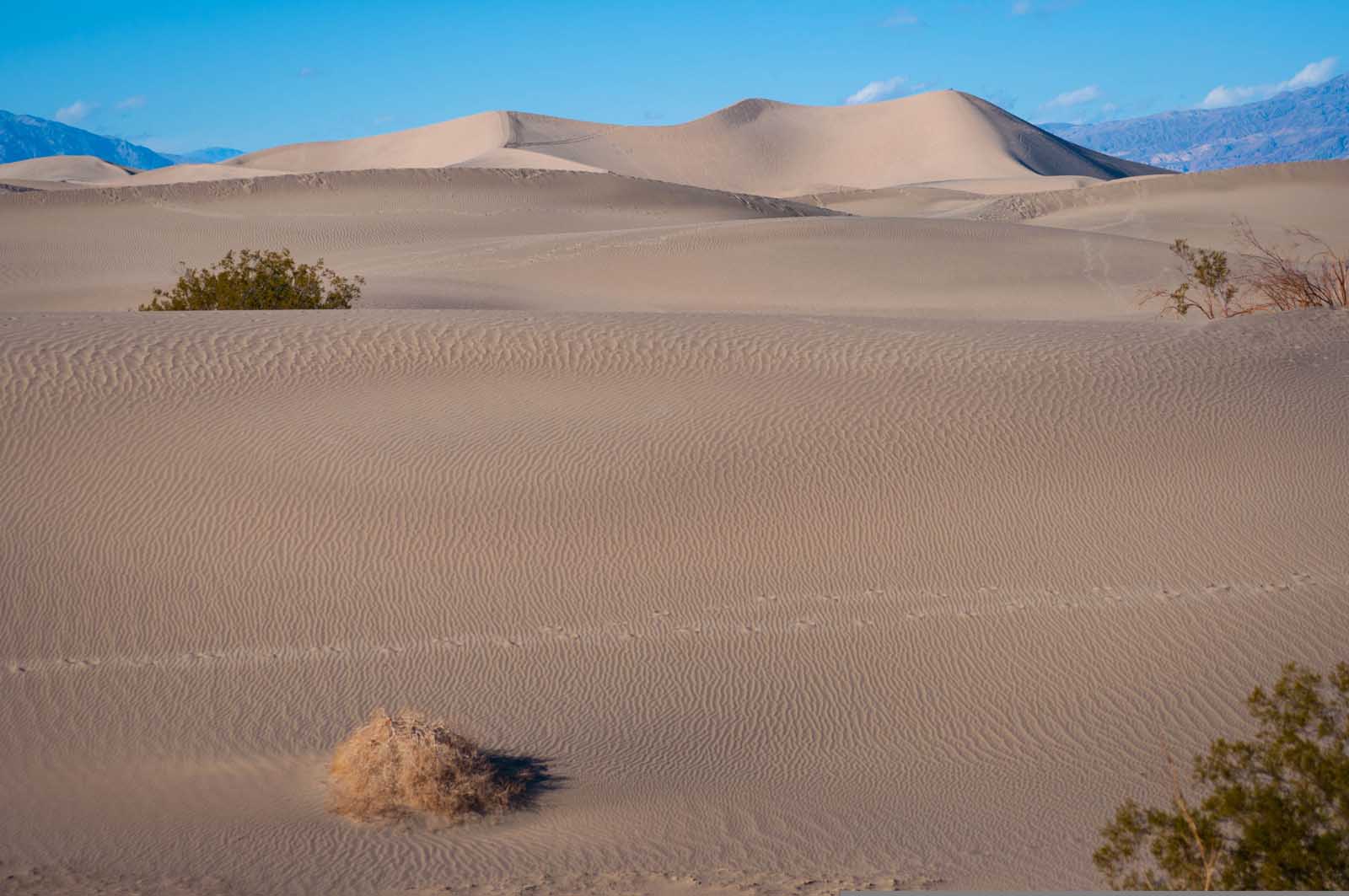
Eureka Dunes are a great attraction for your itinerary. In short, the dunes are massive. They are the largest in California, and some controversially claim they are the tallest in North America. Some dunes rise over 680 feet – don’t be getting ideas about sandboarding, though. Eureka Dunes are closed to sandboarding, sand skiing, and sledding to protect sensitive flora. And who can blame the National Park Service? Eureka Dunes are one of the most impressive natural attractions in the US.
Even though you can’t enjoy sand sports, you can still hike the dunes. Listen carefully while you do, as you may hear the ‘singing sand’. Something about the sand grains moving together creates a beautiful sound, which sounds like an organ bass note. Keep your eyes peeled for desert flora, too, as the dunes are covered in plant life like Eureka Dunes Evening Primrose and Shining Milkvetch.
13. Saline Valley Dunes
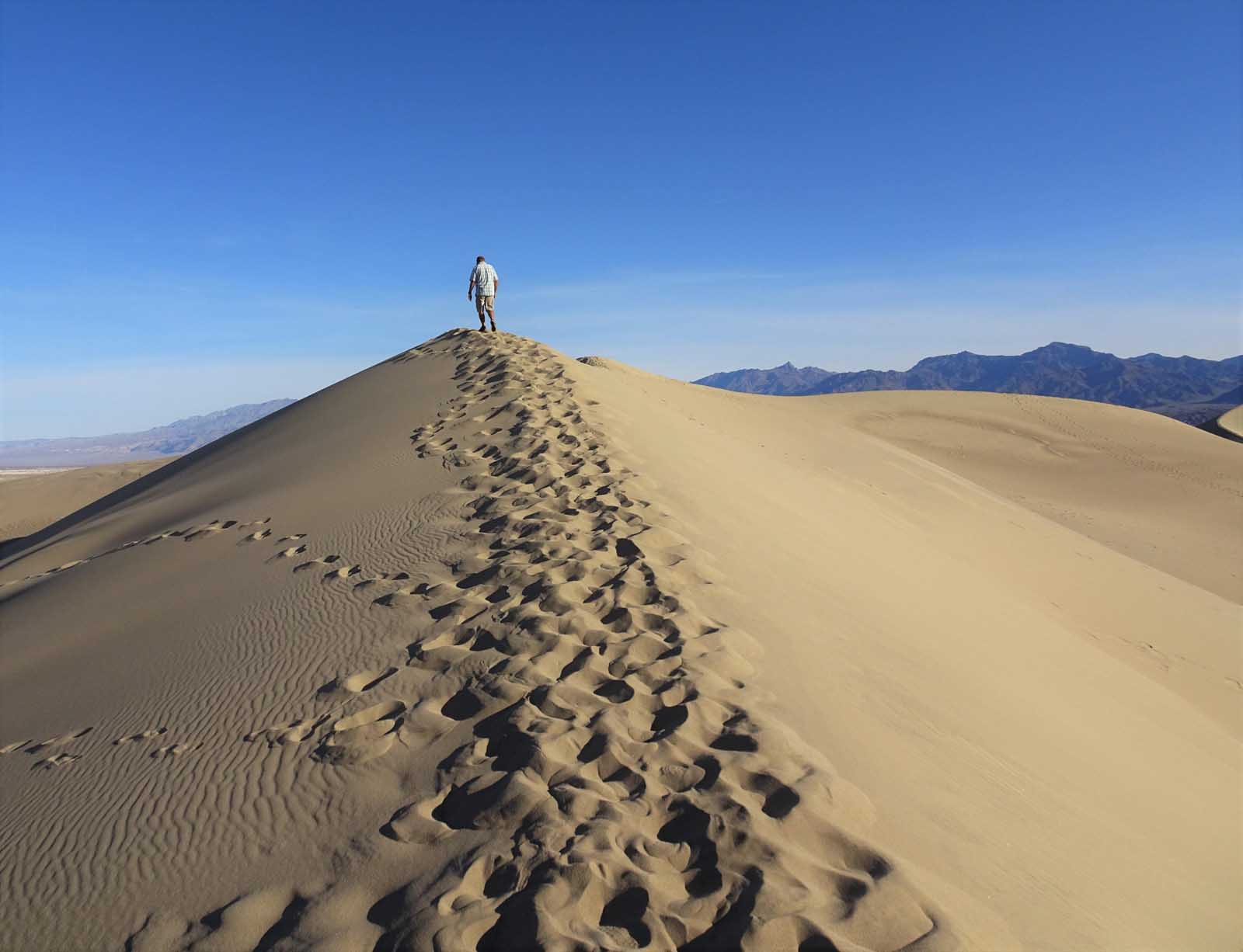
Visiting Saline Valley Dunes is one of the lesser-known things to do in Death Valley National Park. These sand dunes are much lower than the others in Death Valley, and although sandboarding is permitted, the dunes are also much more suited to hiking.
Death Valley’s sand dunes cause quite the stir, despite only covering 1% of the national park. Saline Valley Dunes and Mesquite Flat Sand Dunes are the only dunes that allow activities like sandboarding. Choose one of these sand dunes if you want to try sand sports. Saline Valley is ideal for those who want to get further off the beaten track and prefer attractions with fewer crowds. The dunes have the stunning 10,000 feet high Inyo Mountains as a scenic backdrop.
Getting to the dunes requires a fun, but demanding drive down a rough road, often inaccessible due to flash floods and snow. The road is located off Saline Valley Road and requires a vehicle with high clearance and 4WD. The adventure begins before you even reach the parking lot.
14. Telescope Peak
We have covered the lowest point in Death Valley (Badwater Basin), but what about the highest point? Well, that would be Telescope Peak. Telescope Peak is the tallest mountain in Death Valley and the perfect challenge for hiking and climbing enthusiasts.
Hiking the mountain is no mean feat, and you’ll tackle 3,000 feet of elevation in a 14-mile, 7-hour round trip. The trailhead is located at Mahogany Flat Campground, and reaching it is an adventurous mission. You need a 4WD to access the campground and parking area, and you’ll get a taste of rough (almost off-road) track driving before you even begin your hike. We recommend staying at Mahogany Flat Campground the night before and after your walk to maximize your daylight and energy levels.
While technically a single-day hike, we recommend setting aside at least one evening to camp overnight at the campground. Still, Telescope Peak is easily added to your itinerary. It is also right next to the Wildrose Charcoal Kilns – a brilliant attraction to combine with your hike.
15. Harmony Borax Works
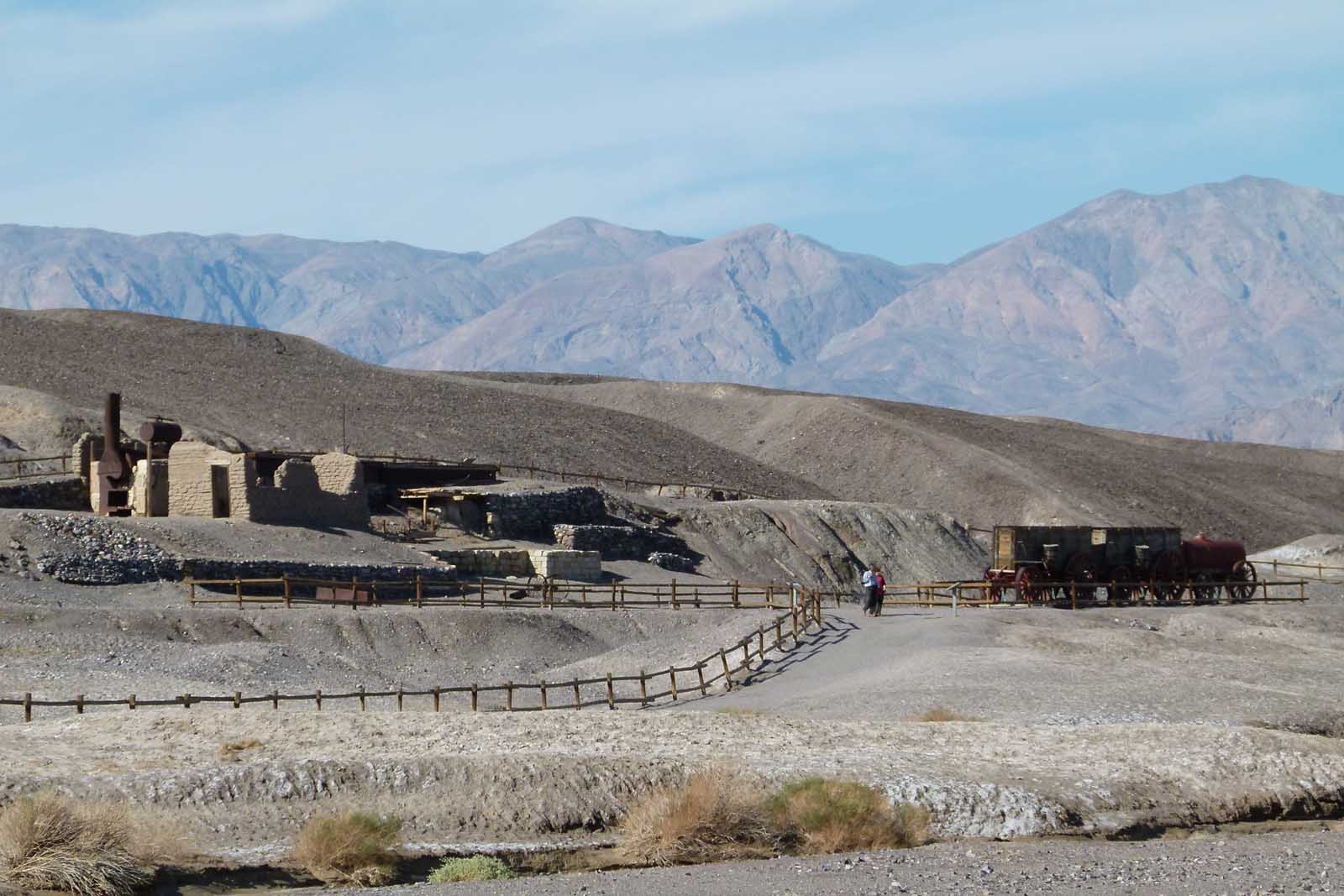
Have you heard of the Harmony Borax Works before? The borax plant was once a thriving business, with 40 employed workers and three tons of borax produced daily. The company was located in Furnace Creek and massively contributed to the town’s popularity and growth in the late 19th century. Nowadays, you can walk around the site on a paved 0.4-mile loop – stopping to read informative panels and view displays along the way.
Visiting Harmony Borax Works is one of the most historical things to do in Death Valley National Park. And while the site is small, it is officially held on the National Register of Historical Places and is a well-known tourist attraction. The wagons from Harmony Borax Works coined the name ’20 mule teams’ because they used large groups of mules to transport all the borax. You may recognize the phrase from Twenty Mule Team Canyon.
16. Manzanar National Historic Site
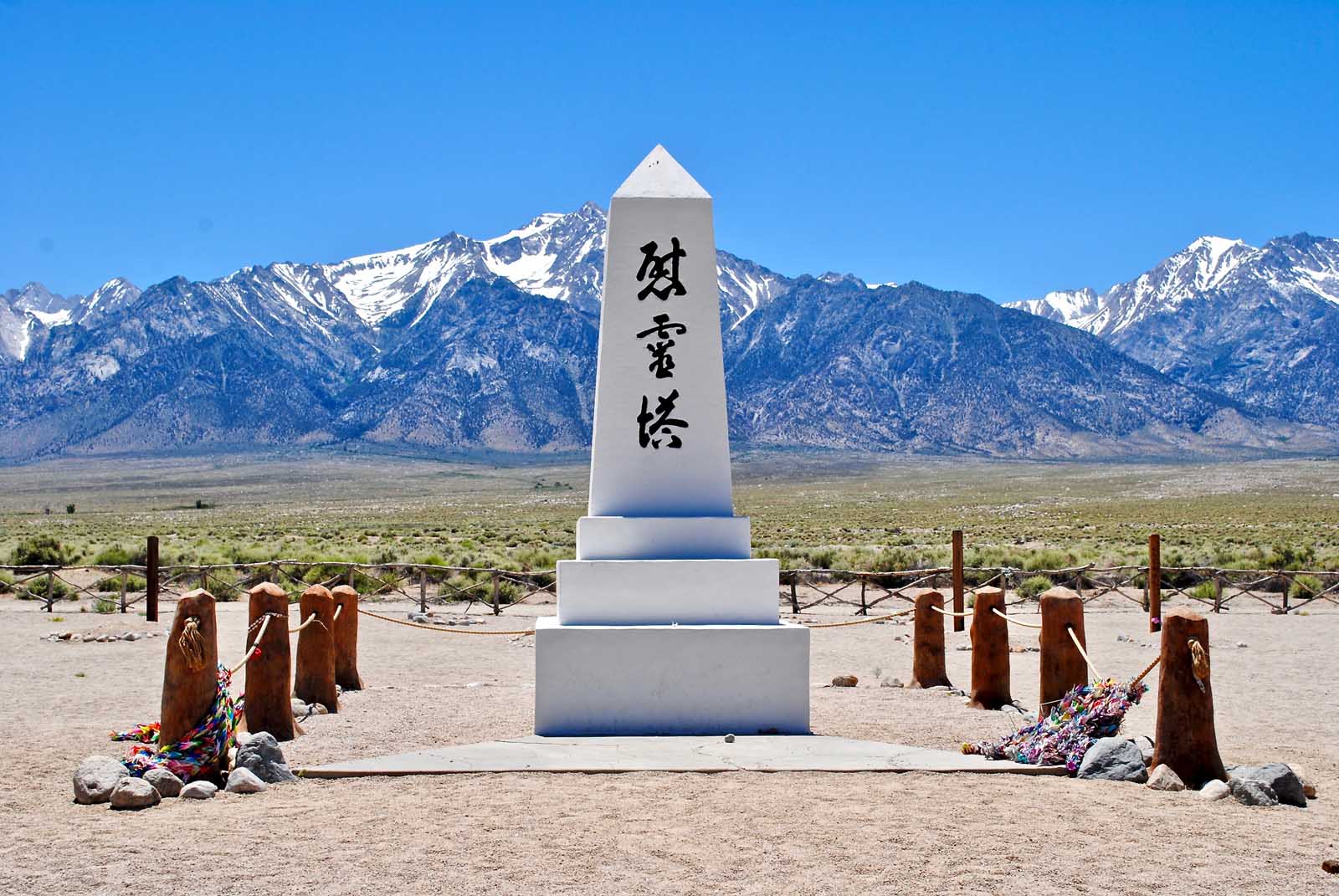
Manzanar is another incredible attraction located just outside the national park boundaries. If you are staying on the outskirts or taking a California road trip, it is well worth stopping by Manzanar. The site was one of ten sites where Japanese Americans were incarcerated during World War II. It is a fascinating, often harrowing place to discover a part of history that isn’t as widely covered.
You can visit anytime between sunrise and sunset, perhaps booking a guided tour if you want a more informative, interactive experience. If you were planning on climbing Mt Inyo, the site is also en route to the trailhead, so don’t rule out Manzanar straight away based on distance.
17. Mosaic Canyon
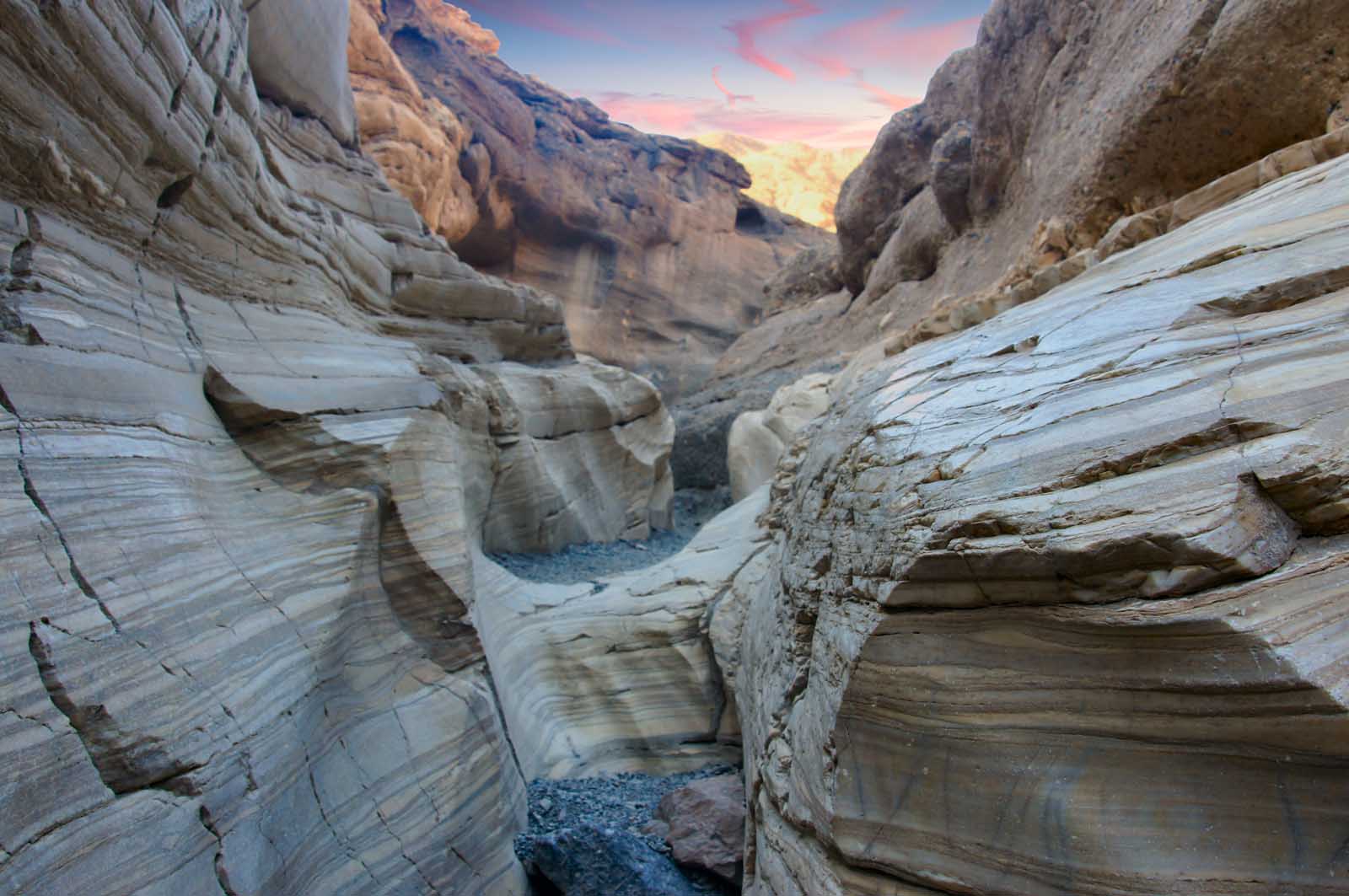
Ready for another beautiful canyon? Mosiac Canyon is a deep ravine formed by flash floods over millions of years. It gets its name from its unique walls, where flood waters full of grit have polished the marble walls, and tiny fragments have become locked in natural cement.
The route is by no means easy. It is rated as a moderate to difficult hike and requires a lot of boulder scrambling and an adventurous spirit to pass certain sections. However, where there is a will, there is a way, and you’ll just need a decent fitness level and good shoes to complete this trail. The trail is around 4 miles out and back; you should allow three hours to complete it.
18. Wildrose Charcoal Kilns
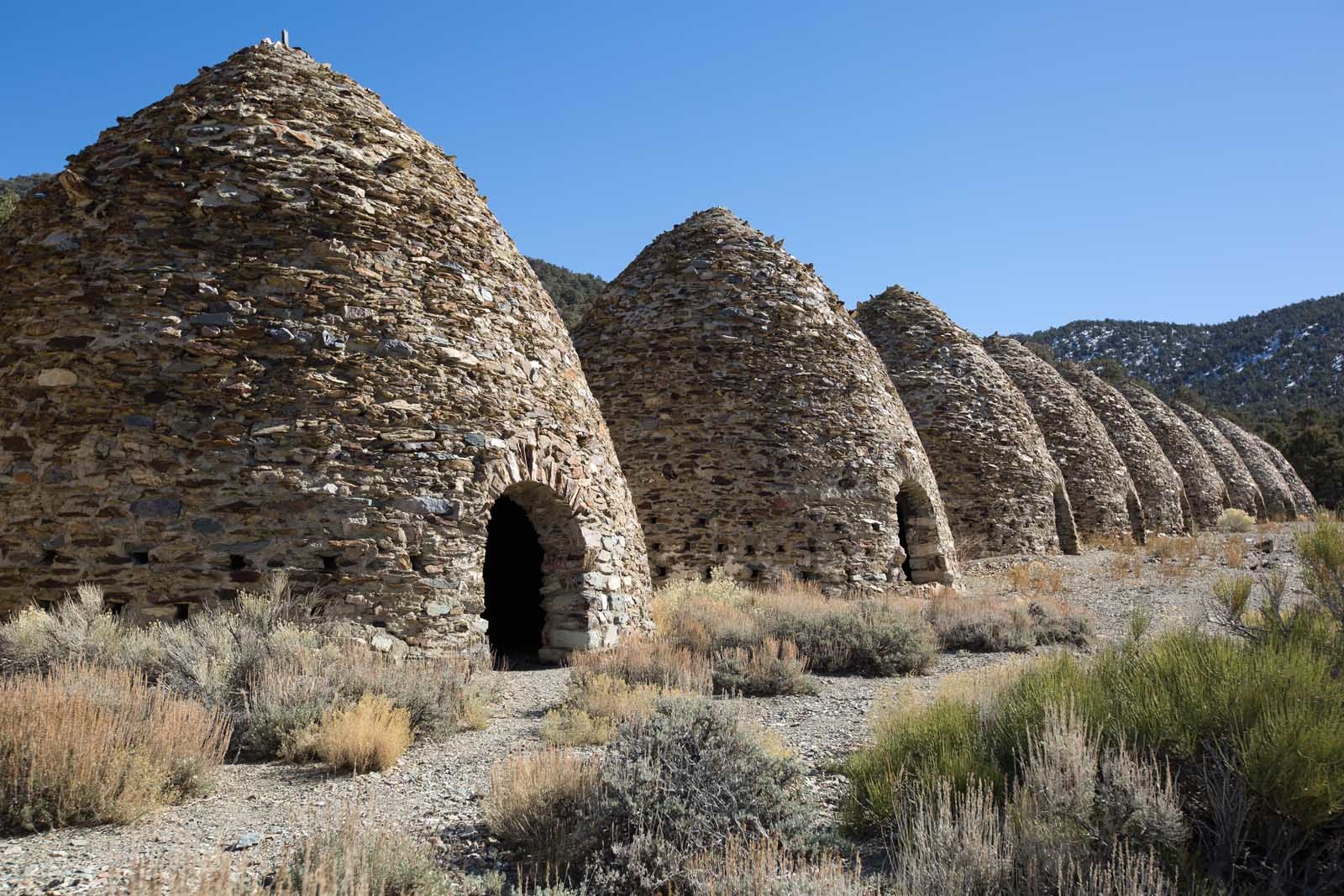
Do you remember us mentioning that Wildrose Charcoal Kilns were near Telescope Peak? Well, the kilns are attractions in their own right. The kilns look like bizarrely shaped houses and have a large hole at the front where you can enter inside. They were built in 1877 to create charcoal for local mines, but they have long since been retired. Now, Wildrose Charcoal Kilns are empty – apart from when a tourist like yourself stops to poke their head in and take a look.
There are ten kilns, all structured in a single line and about 25 feet high. The kilns are in excellent condition, which makes them fantastic for tourists and has kept them firmly marked as worthy attractions in Death Valley. If you’d like to learn more about the early mining industry, Wildrose Charcoal Kilns are a great way to do so.
19. Ubehebe Crater
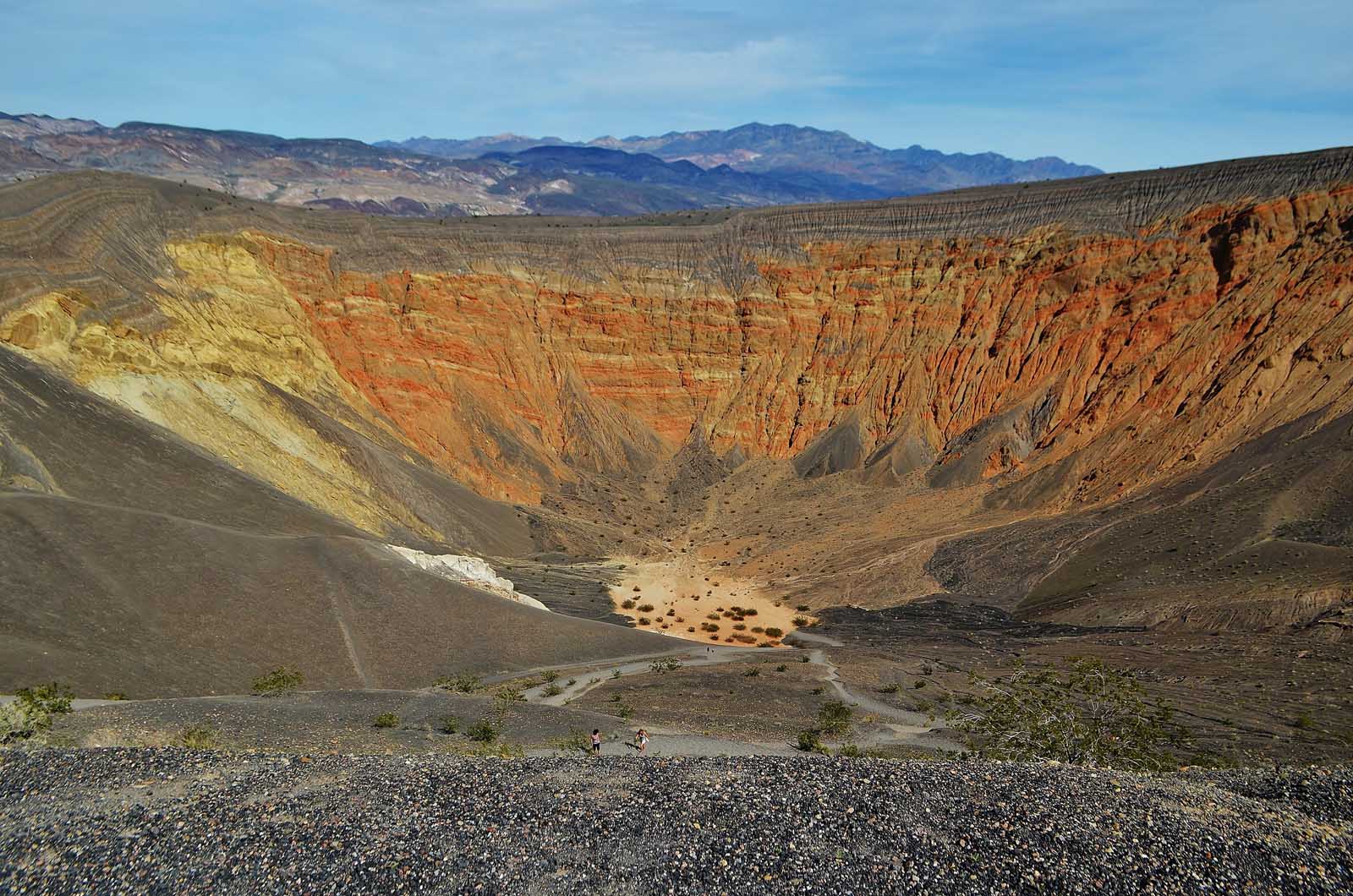
Ubehebe Crater should be at the top of your to-do list if you’ve never seen a volcanic crater. Ubehebe Crater is enormous. It is quite the sight, 600 feet deep and half a mile wide. Ubehebe Crater is still an ashy, dark gray color, which adds to the dramatic appeal.
If you want, you can hike down to the bottom of the main crater. However, you should remember that hiking back up is exhausting and highly strenuous. Walking around the crater rim is a lot easier. However, it is still classed as a moderate hike because of the uneven footing. Take your time on the Ubehebe Crater Rim Trail, and plan lots of breaks to prevent slipping and injury. The 2-mile loop may not be long, but it pays to take your time – plus, you’ll have stunning views while you rest.
20. Racetrack Playa
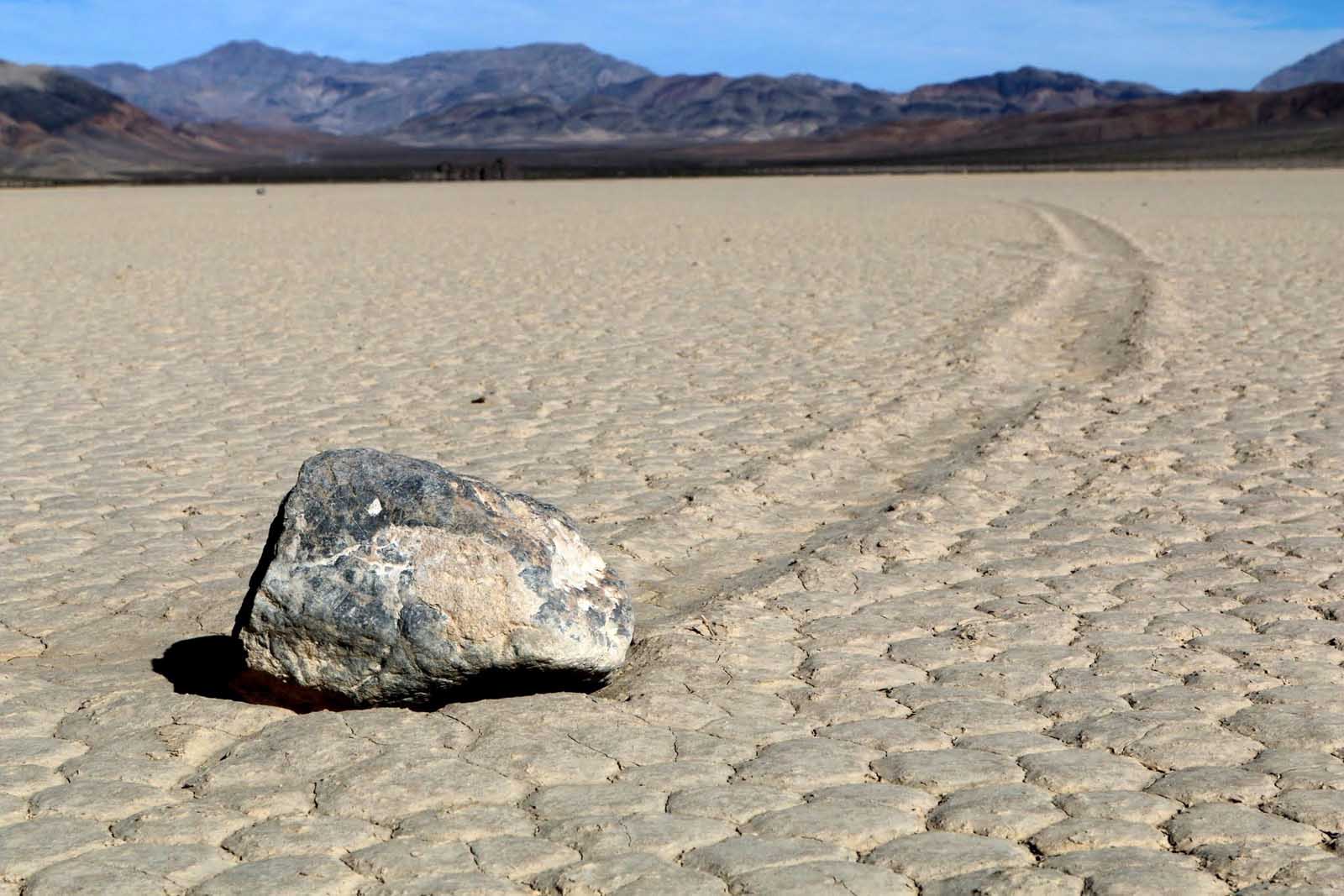
Have you ever wished that you could walk on the moon? If so, Racetrack Playa is one of the best things to do in Death Valley National Park. The dry lake is a scene from the moon landing and is a dramatic, lunar-like landscape to explore and get fantastic pictures of.
Racetrack Playa gets its name from its sailing stones, which are enormous rocks moved by a combination of rain, making the ground slippery and wind pushing the rocks along. The tracks that the sailing stones leave look like race tracks – giving Racetrack Playa its name. It is widely believed that nobody has ever seen the rocks moving, but who knows? Maybe you’ll get lucky.
21. Dante’s View
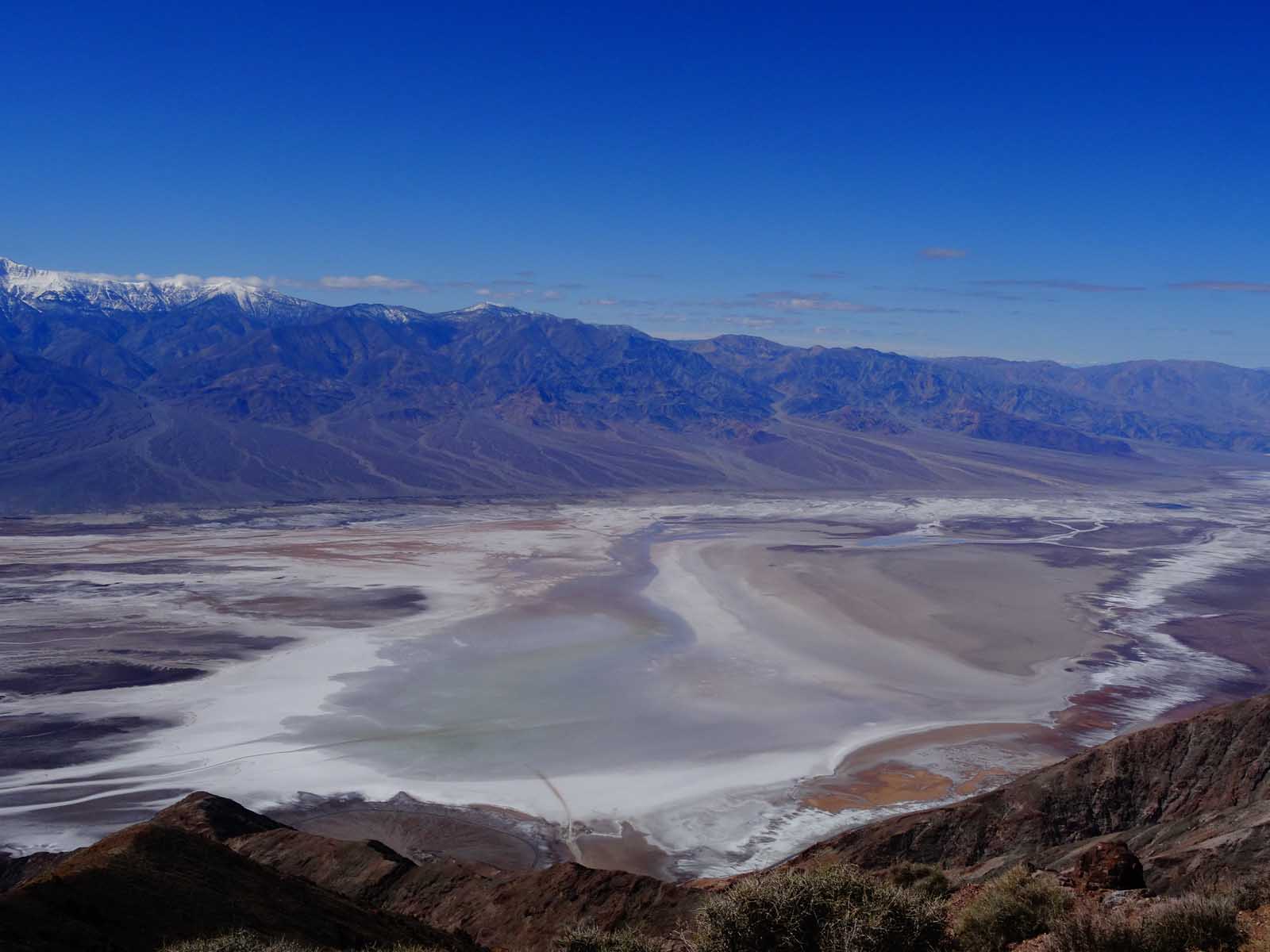
Dante’s View is a scenic viewpoint that towers 5,575 feet above Badwater Basin and sits on a ridge of the Black Mountains. Surrounded by mountains and perfectly fanned by the light breeze, you can enjoy spectacular views over the landscape and dramatic salt flats below. Visiting Dante’s View is about enjoying a different perspective, and viewing Badwater Basin from above is truly humbling.
Dante’s View is popular at all times of the day. Sunrise and sunset are understandably sought-after times, and the salt flats look stunning illuminated by first and last light. However, you can also visit at night for incredible night sky views. In case you didn’t know, Death Valley is an International Dark Sky Park famous for its stunning night sky. Head to Dante’s View after a busy day of sightseeing to relax and unwind under bright constellations and shooting stars.
Death Valley FAQs
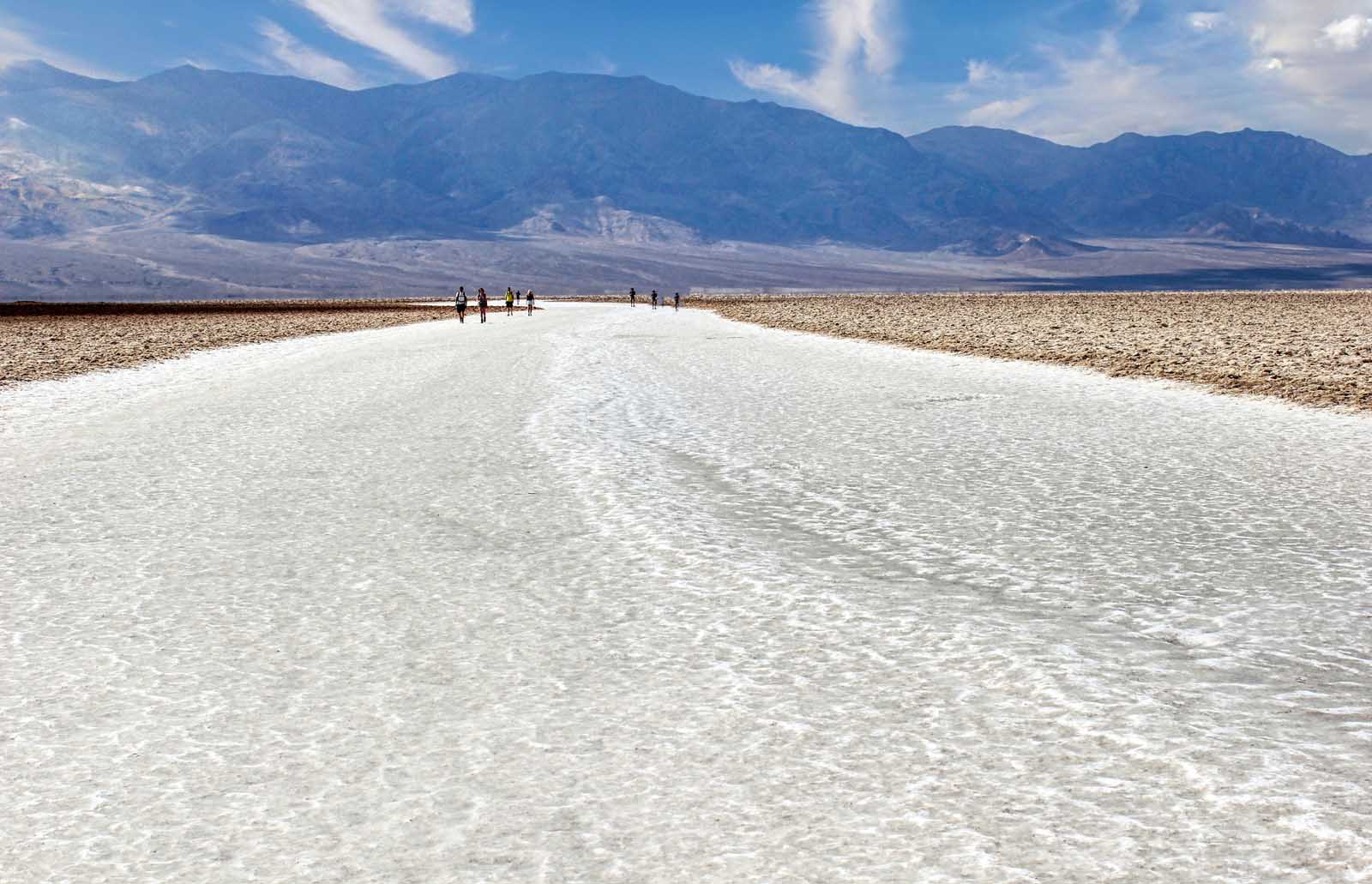
Now that we’ve covered all the best things to do in Death Valley National Park let’s look at some essential information. These are the most common Death Valley FAQs; let’s dive straight in.
How to get to Death Valley
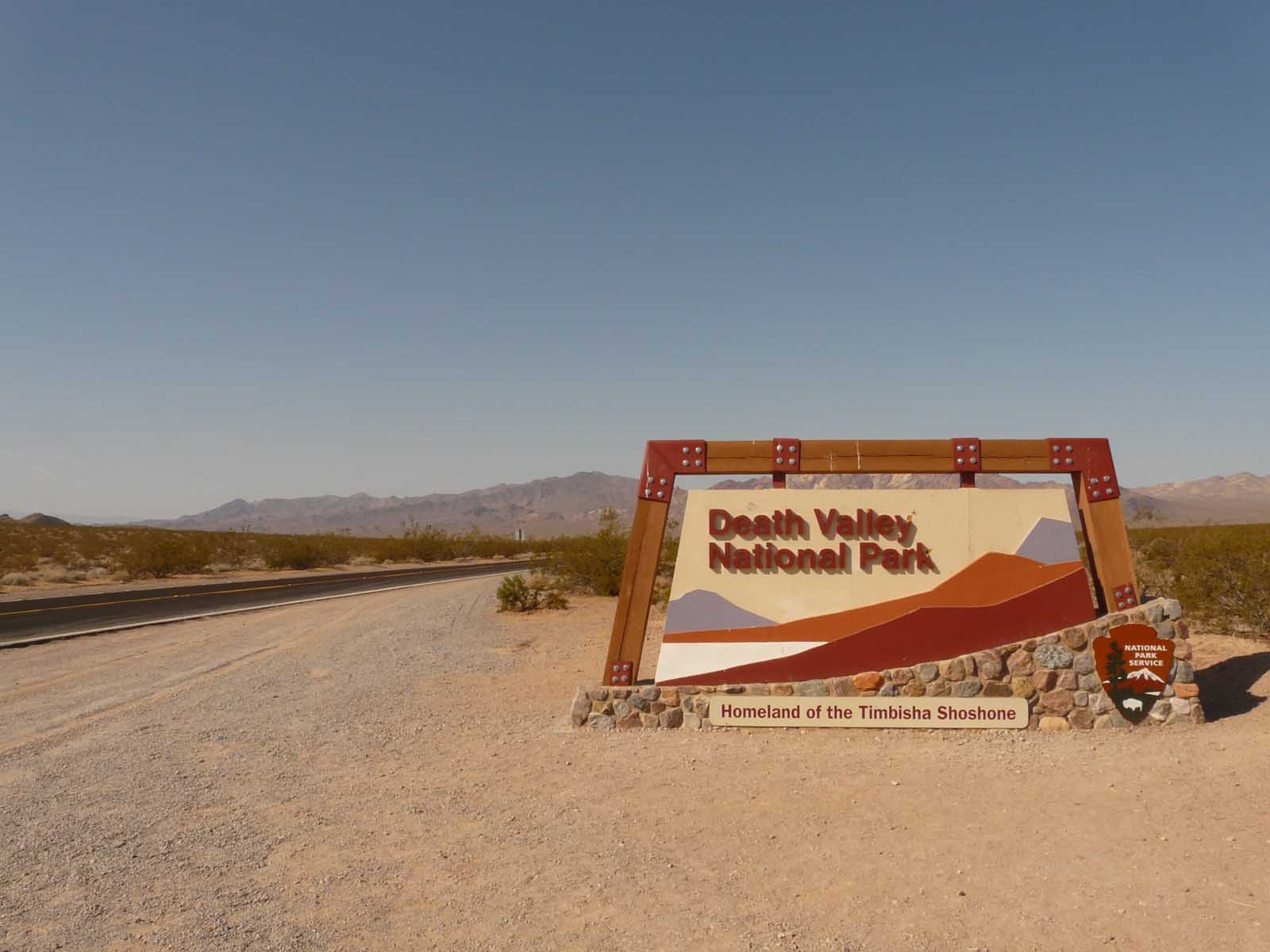
First off, let’s establish Death Valley’s location. The national park straddles the California/Nevada border, although most of the park falls in California.
Because of Death Valley’s inland location, the easiest way to reach the national park is to fly into Las Vegas. Those wanting the quickest way to Death Valley should fly into Las Vegas Airport, hire a car to drive to Death Valley, or book a guided tour.
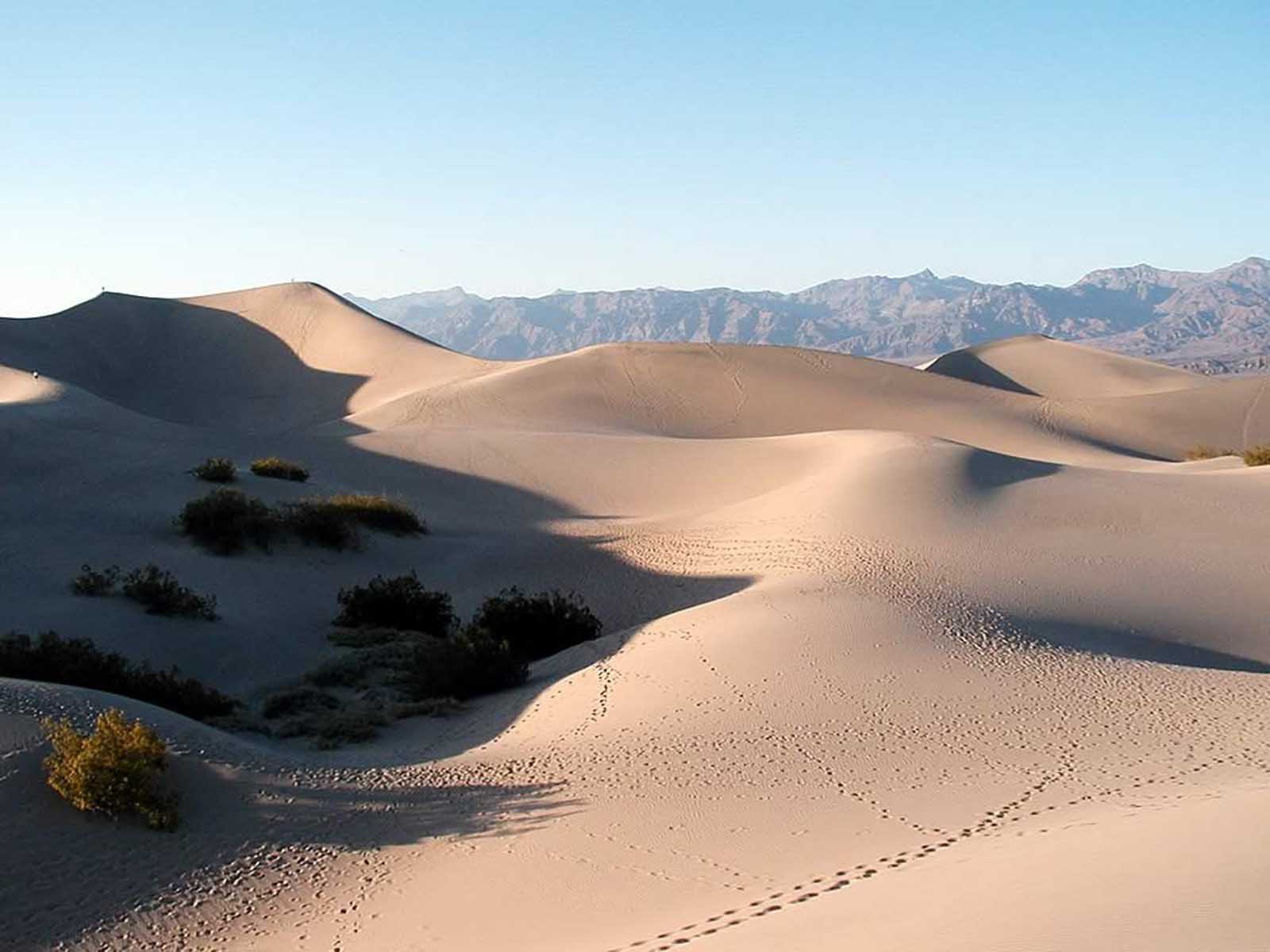
Of course, if you aren’t on a time limit, you could get your adventure on and take a California road trip, perhaps exploring Northern California along the way. If you are really up for an adventure, you could extend your trip and finish in Las Vegas – where you can fly home. Death Valley is ideally located for a road trip; if you have the time, this is the most fun way to get to the national park.
Getting around Death Valley
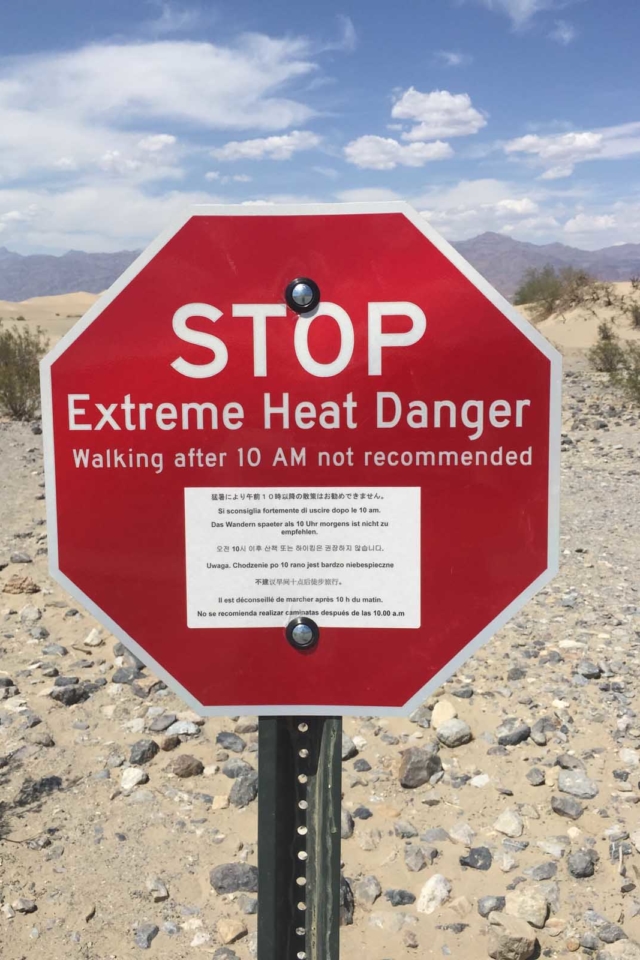
As the largest national park, Death Valley’s public transport system leaves much to be desired. You won’t find any public buses or shuttles, so your only option is to purchase a guided tour or rent a car to drive around.
Allow a day to get around Death Valley and see your top few attractions. And, if you don’t want to drive for so many hours in a single day, it is worth finding overnight accommodation to maximize your experience.
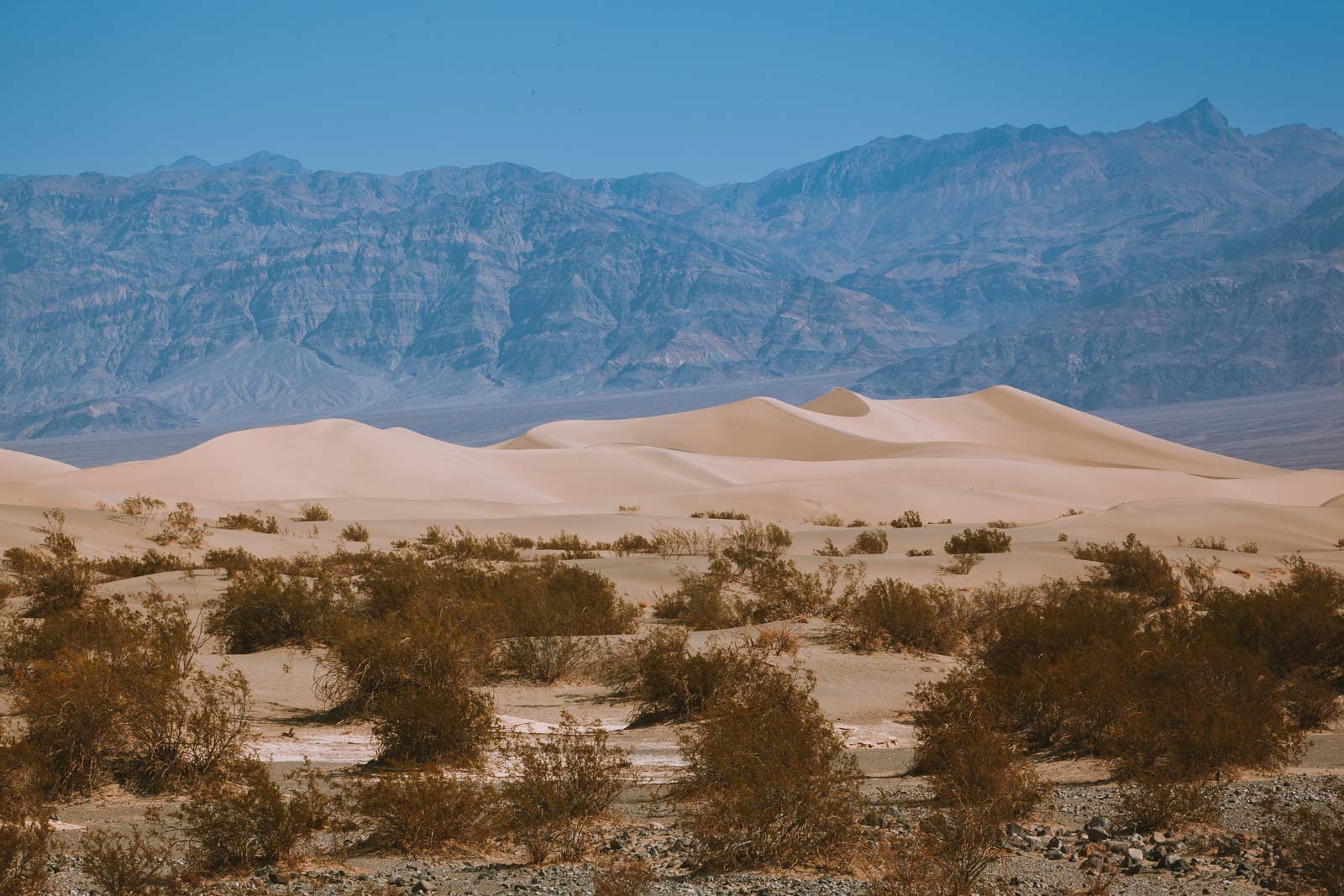
Before you set off driving or on your tour, it is always worth checking for road closure and trail updates in Death Valley online. The desert landscape might be beautiful, but you don’t want to drive the length of Daylight Pass Road before realizing you’ve got to turn around. Remember that gas stations are also limited in Death Valley. If you pass Furnace Creek, top up at the Furnace Creek Gas Station – one of the most centrally located options and accessible gas stations to combine with sightseeing.
Where to stay in Death Valley
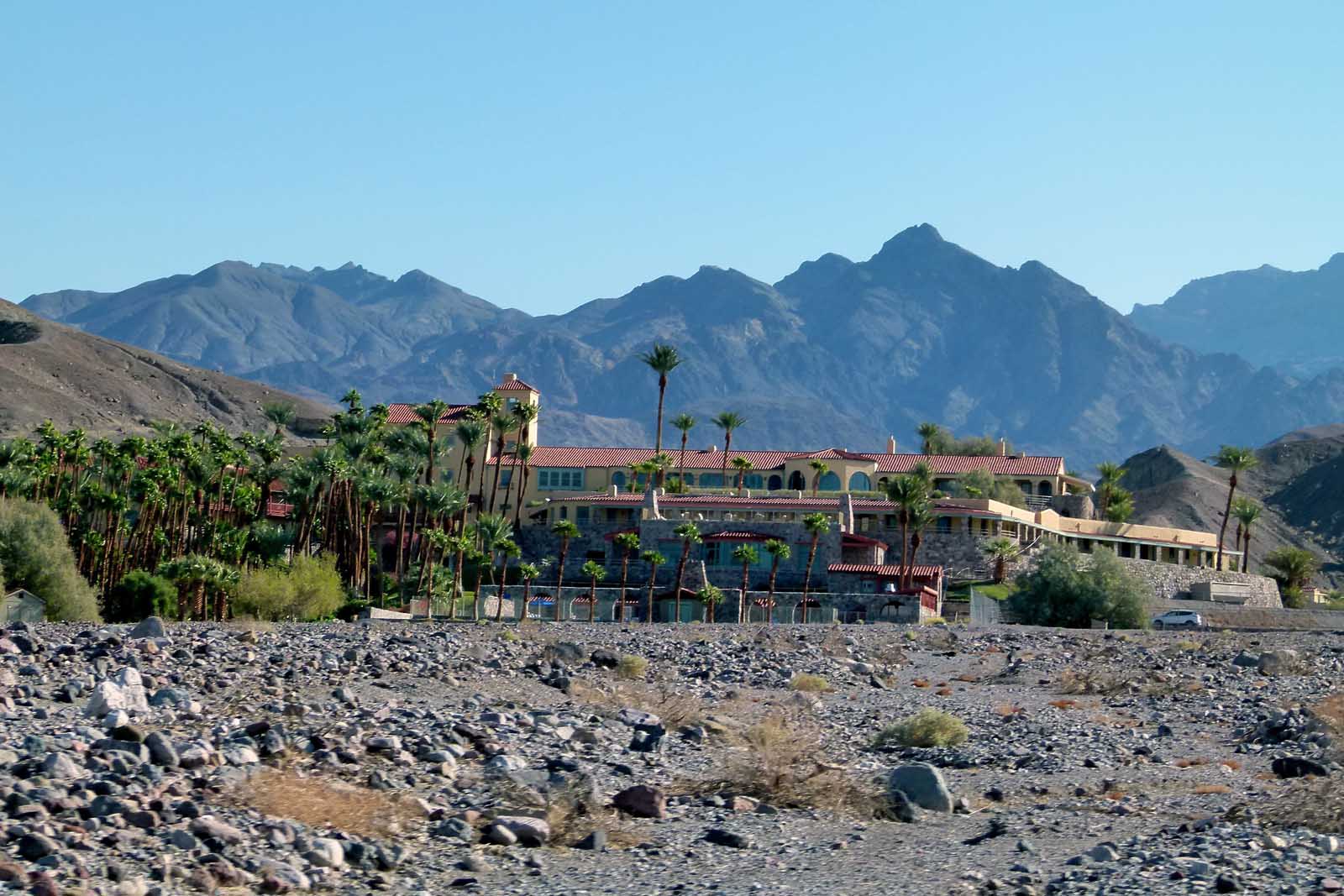
So, where should you stay in Death Valley? These are our top recommendations that you could choose from.
Budget: Panamint Springs Resort
Panamint Springs Resort is a budget traveler’s ideal spot in Death Valley. The resort is family-run and offers an impressively flexible range of accommodation choices, including a campsite, a selection of cabins, and standard hotel rooms.
The resort has its own gas station, general store, and shower facilities for campers. Plus, there is a breakfast buffet served daily. It is the perfect place to base yourself if you want budget-friendly accommodation within the boundaries of Death Valley National Park.
Mid-Range: Delight’s Hot Springs Resort
Delight’s Hot Springs Resort sits just outside Death Valley and is the perfect base for easy access to the national park. The resort has four spring water swimming pools – two indoor and two outdoor to which guests have 24-hour access. There is also a free parking area and a 24-hour reception desk.
Delight’s Hot Springs Resort has a perfect balance of affordable luxury, attentive hospitality, and a convenient location.
Luxury: The Inn at Death Valley
The Inn at Death Valley might be listed as a three-star property but don’t be fooled; this is the best luxury option in the national park. The location is dreamy, and you’ll be in the center of Death Valley, just outside Furnace Creek. The property offers a range of rooms, suites, and a bungalow, so you can always splash out for a bit of extra luxury.
Guests receive access to a sauna, a fully equipped gym, two spring-fed pools, a golf course, and tennis courts. Death Valley isn’t known for its urban amenities, so having a hotel with plenty of recreational activities is a huge bonus.
The best time to visit Death Valley
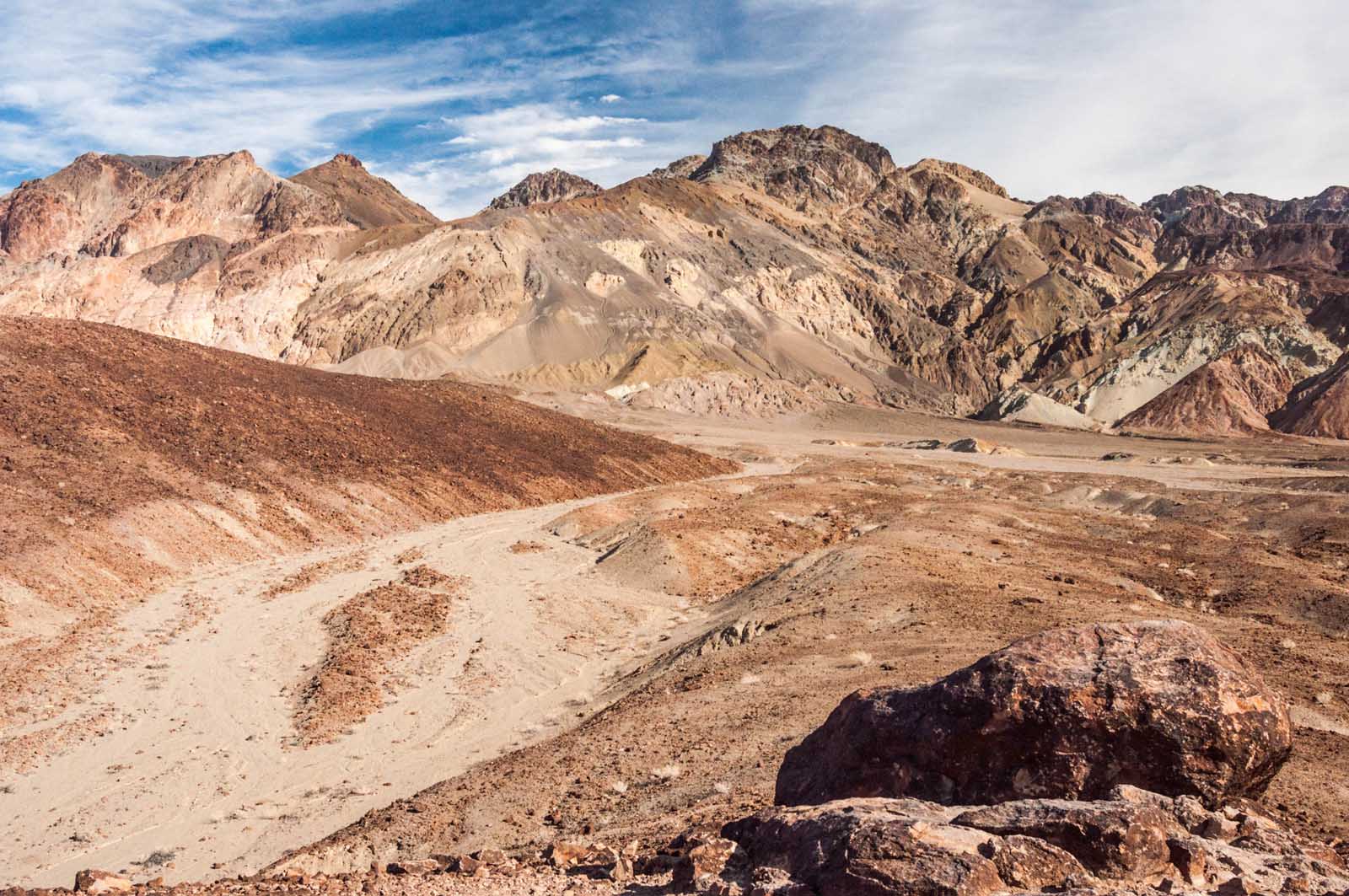
Death Valley makes a great destination in early spring. The temperatures are cool, the wildflowers are out, and it is the best time to comfortably enjoy all the things to do in Death Valley National Park. It can get a little busy, as this is the most popular time to visit Death Valley, but it is worth the crowds for the beautiful conditions. Late March and April are the best months in spring.
October is your month if you have your heart set on avoiding crowds. You won’t get the wildflowers. However, autumn brings cooler weather that is perfect for exploring the valley floor. Visiting Death Valley in October is a pleasant, quieter experience.
When should you avoid Death Valley? Well, it doesn’t take a genius to figure out that the summer is not the best time to visit Death Valley. In summer, the California desert is unhospitable and unpleasantly hot. Stick to visiting in March or April if you don’t mind the crowds and October or November if you don’t mind missing the spring bloom.
Final Thoughts
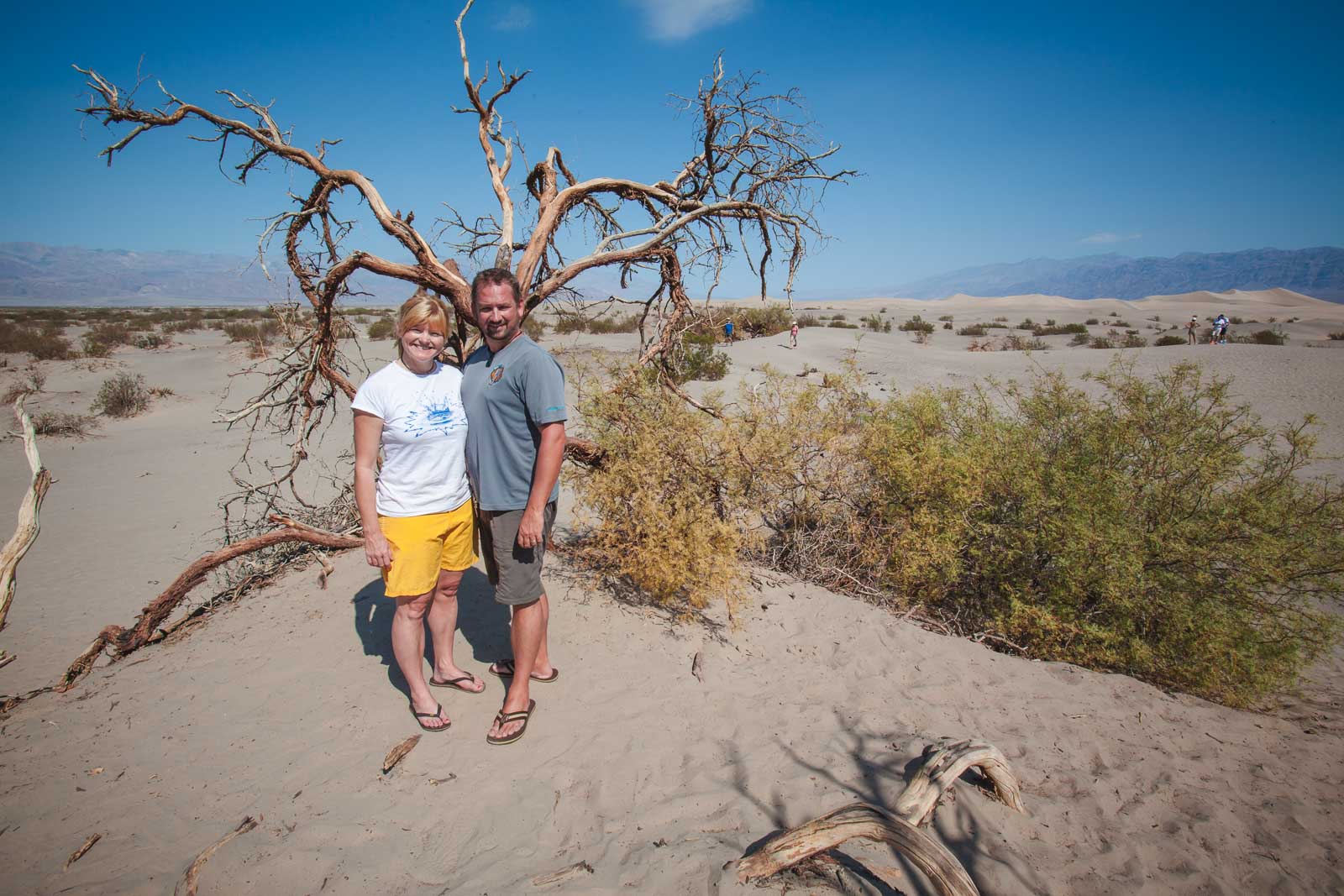
Once you’ve visited Death Valley, you should definitely return for a second visit. There are so many things to do in Death Valley National Park, and even visiting Death Valley in different seasons can drastically change your experience. The national park has some of the best hikes in California. It is also within driving distance of other fantastic national parks like Yosemite.
We hope you have a fantastic time in Death Valley. Take our advice and experience as many of its attractions as possible. These Death Valley ‘things to do’ are sure to guarantee you a memorable trip.
Plan Your Next Vacation to California With These Resources
- 25 Things to do in San Jose, California
- Where to Stay in Yosemite
- 16 Best Cities in California
- 24 Of The Best Beaches in California
- 15 Best Hikes in California – Inspiration to Get Outdoors
- 7 Epic Places to Visit in Northern California
- 20 Great Things to do in Monterey, California
- 25 Best Things to Do in Los Angeles – Hollywood, Hikes, And More
- 15 campgrounds in Big Sur, California

